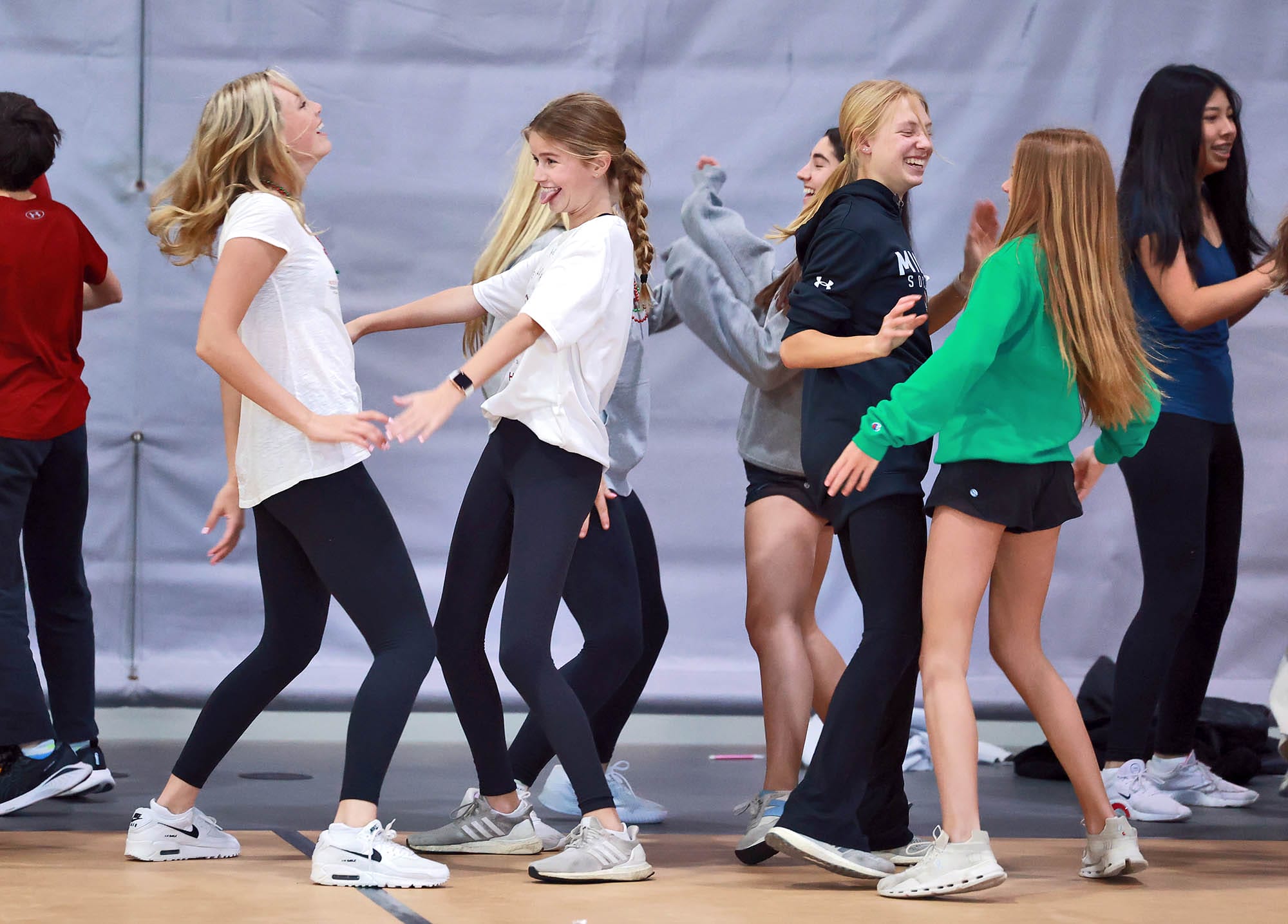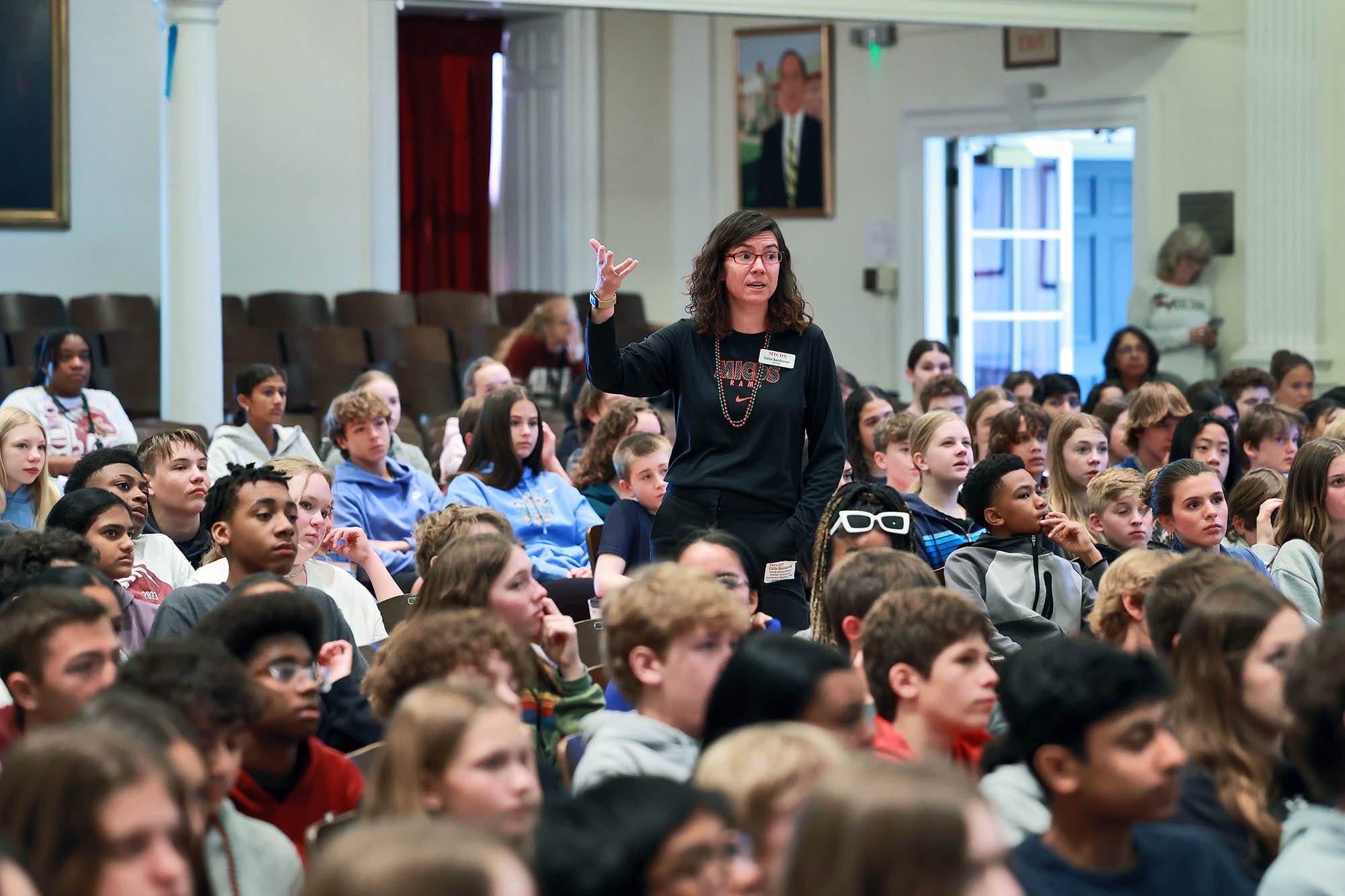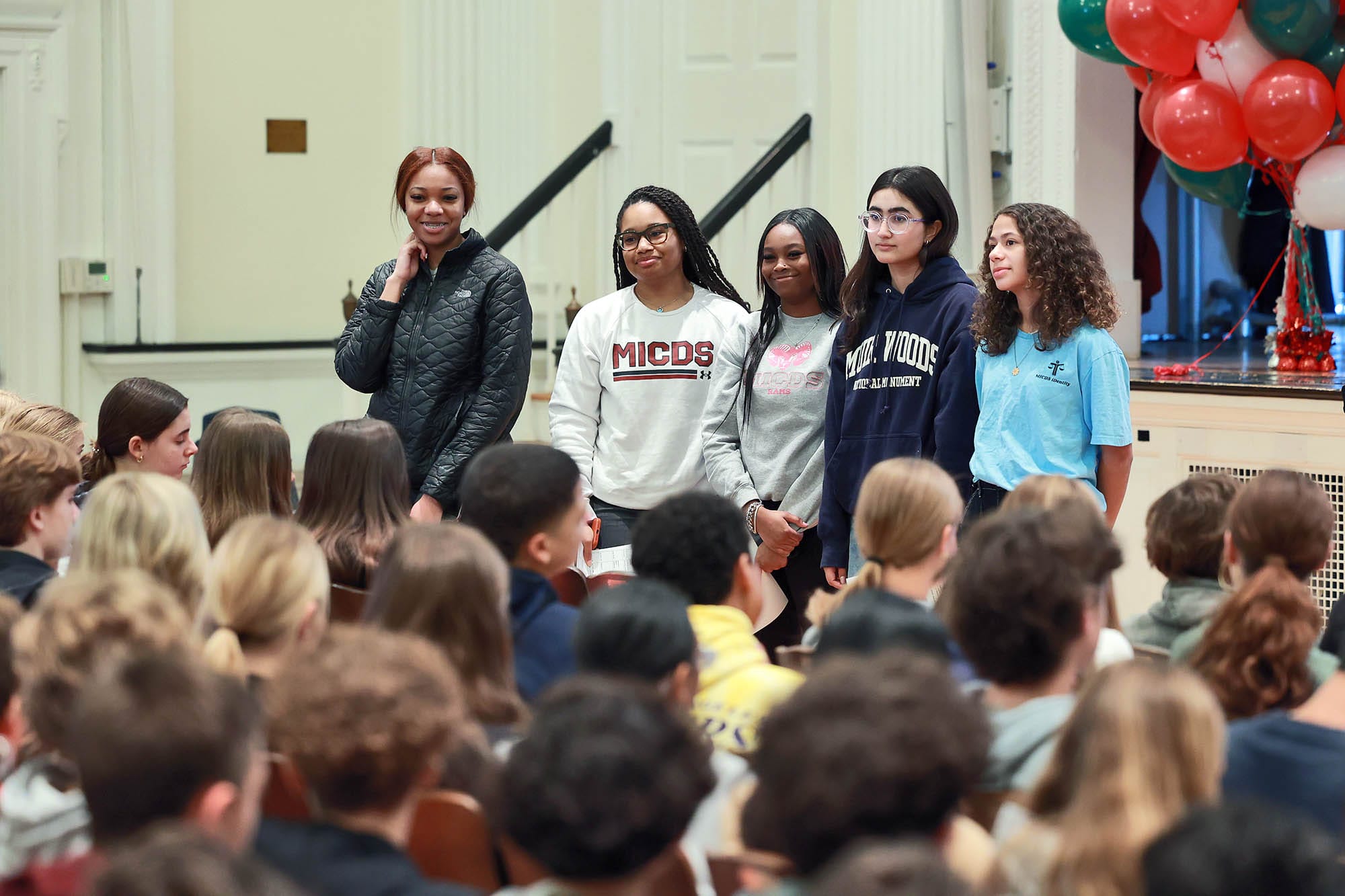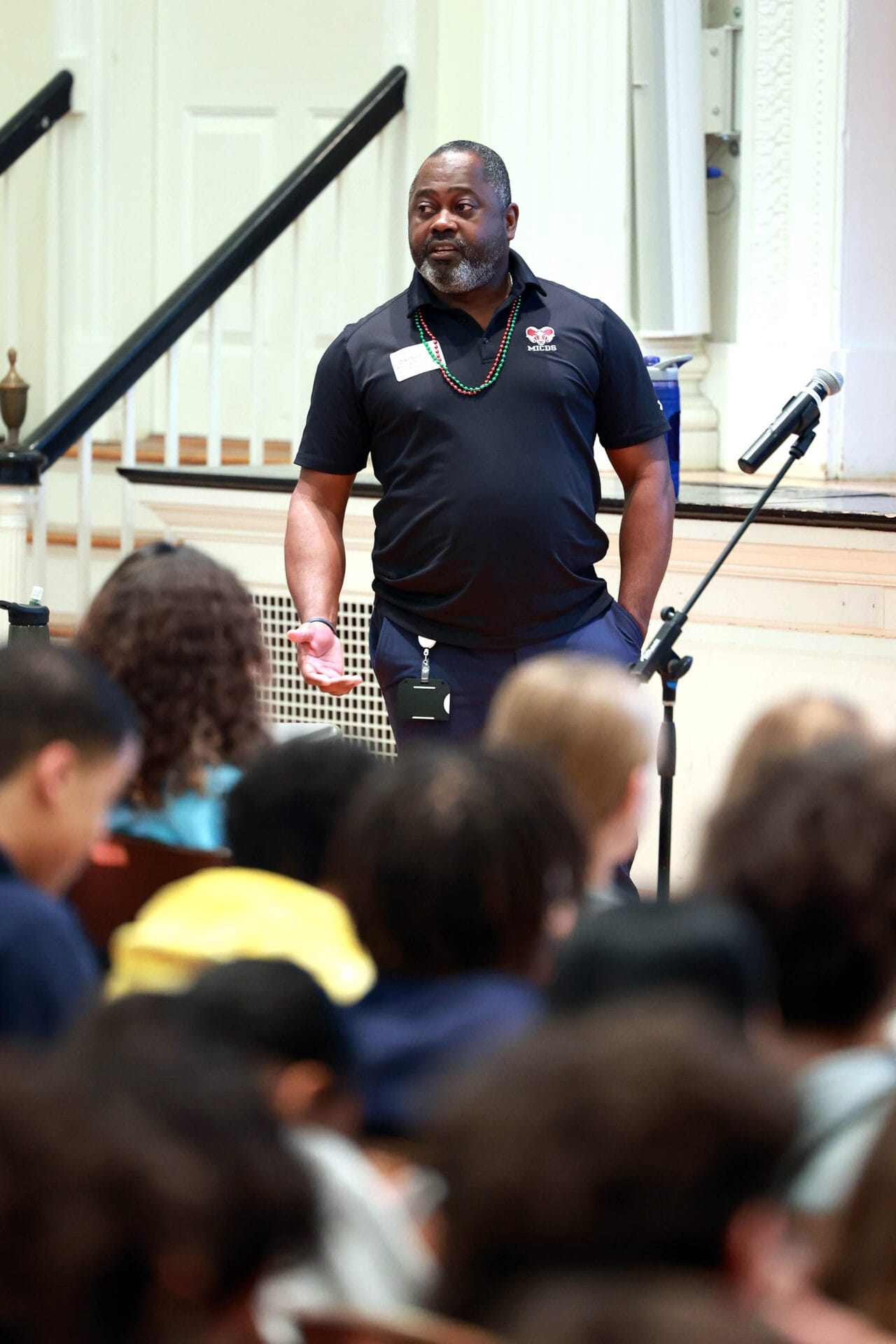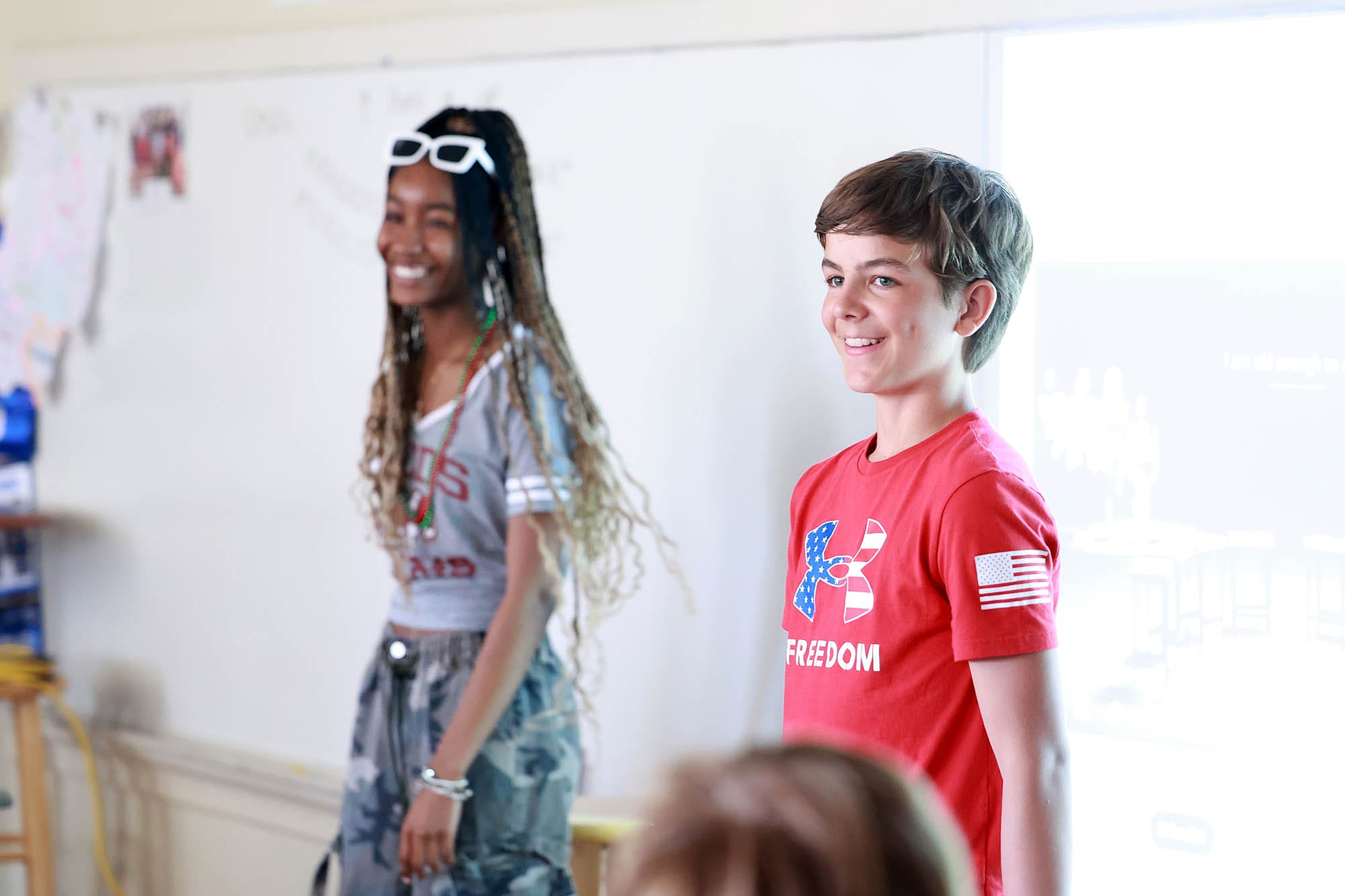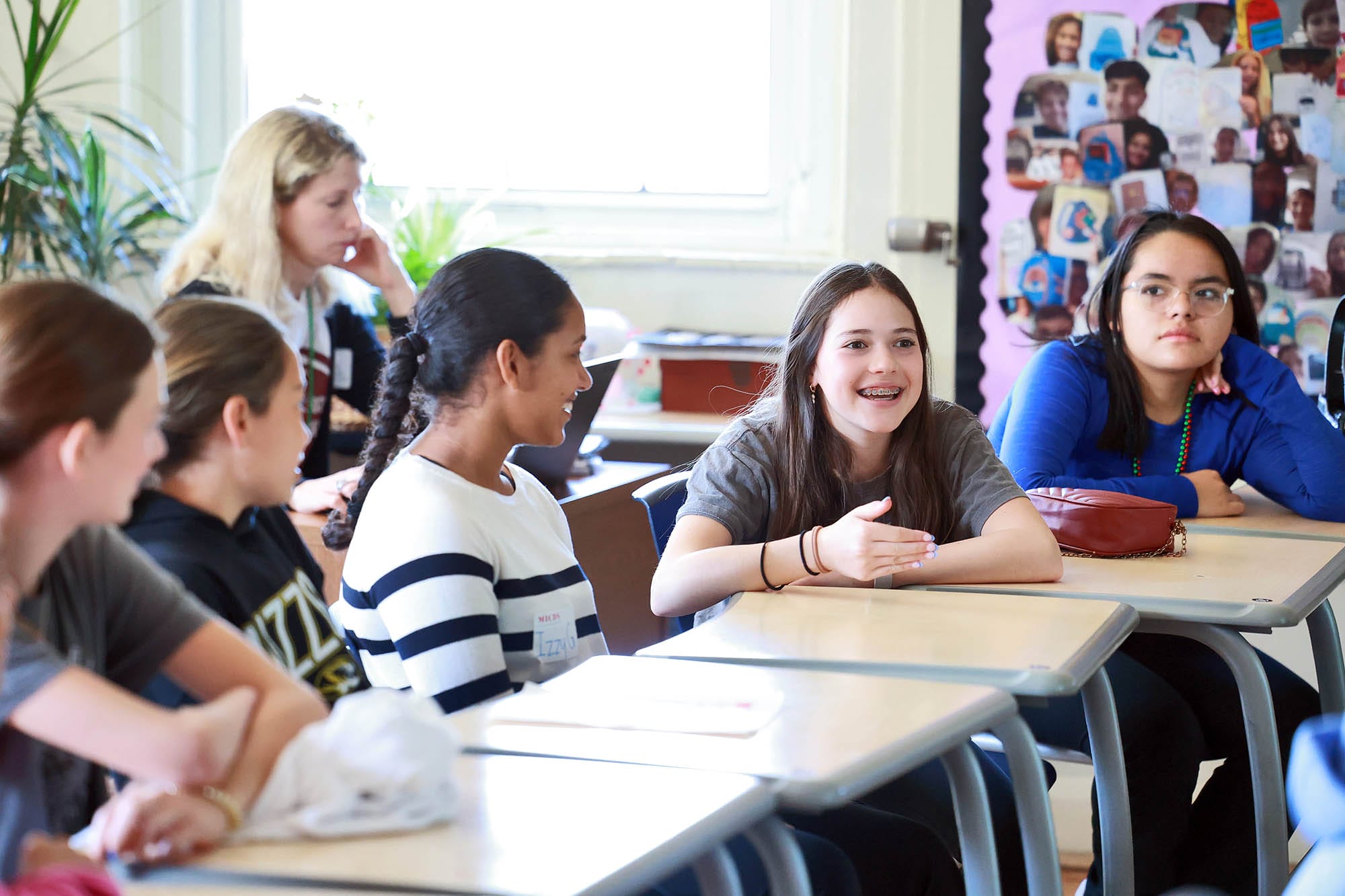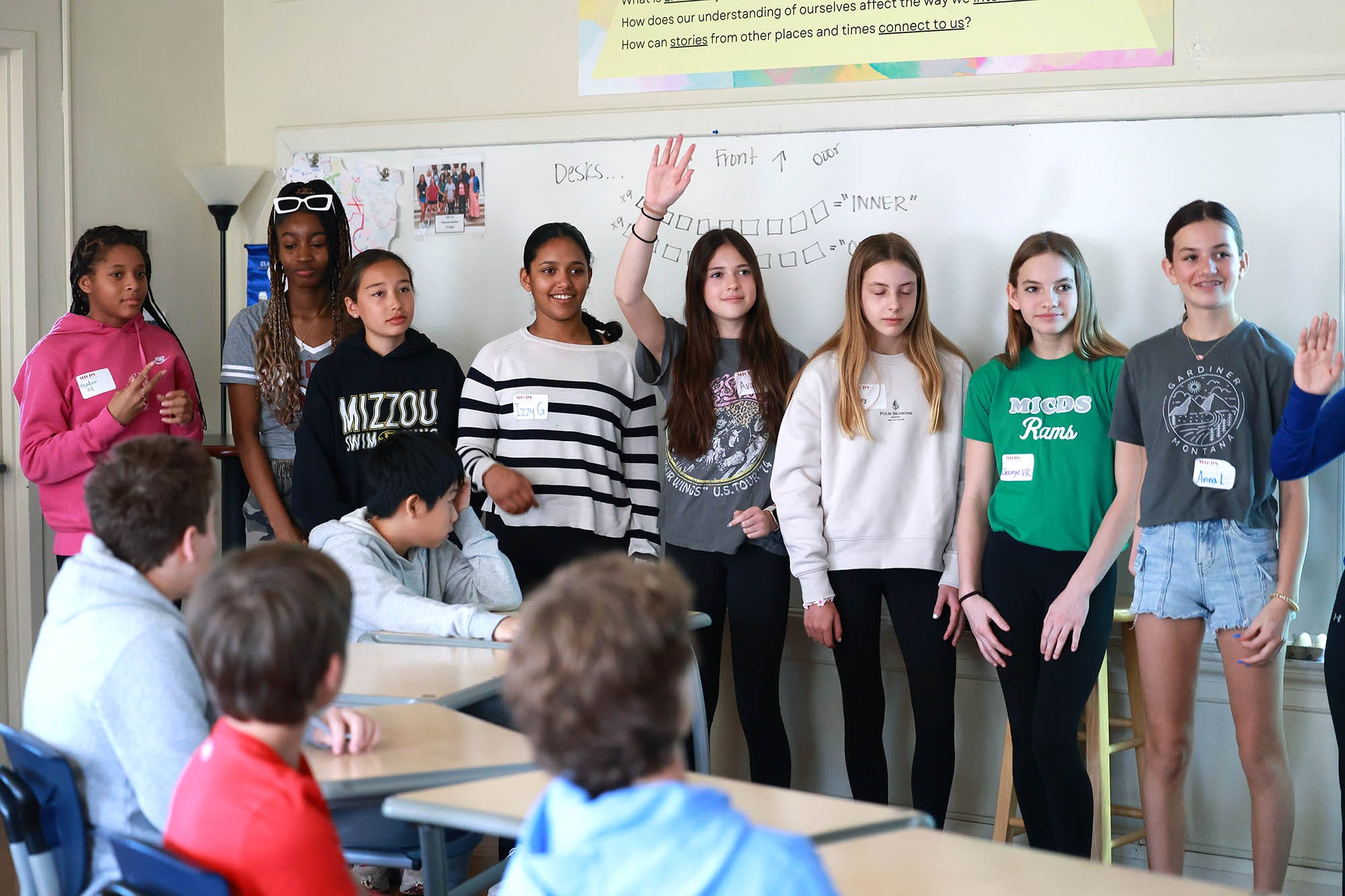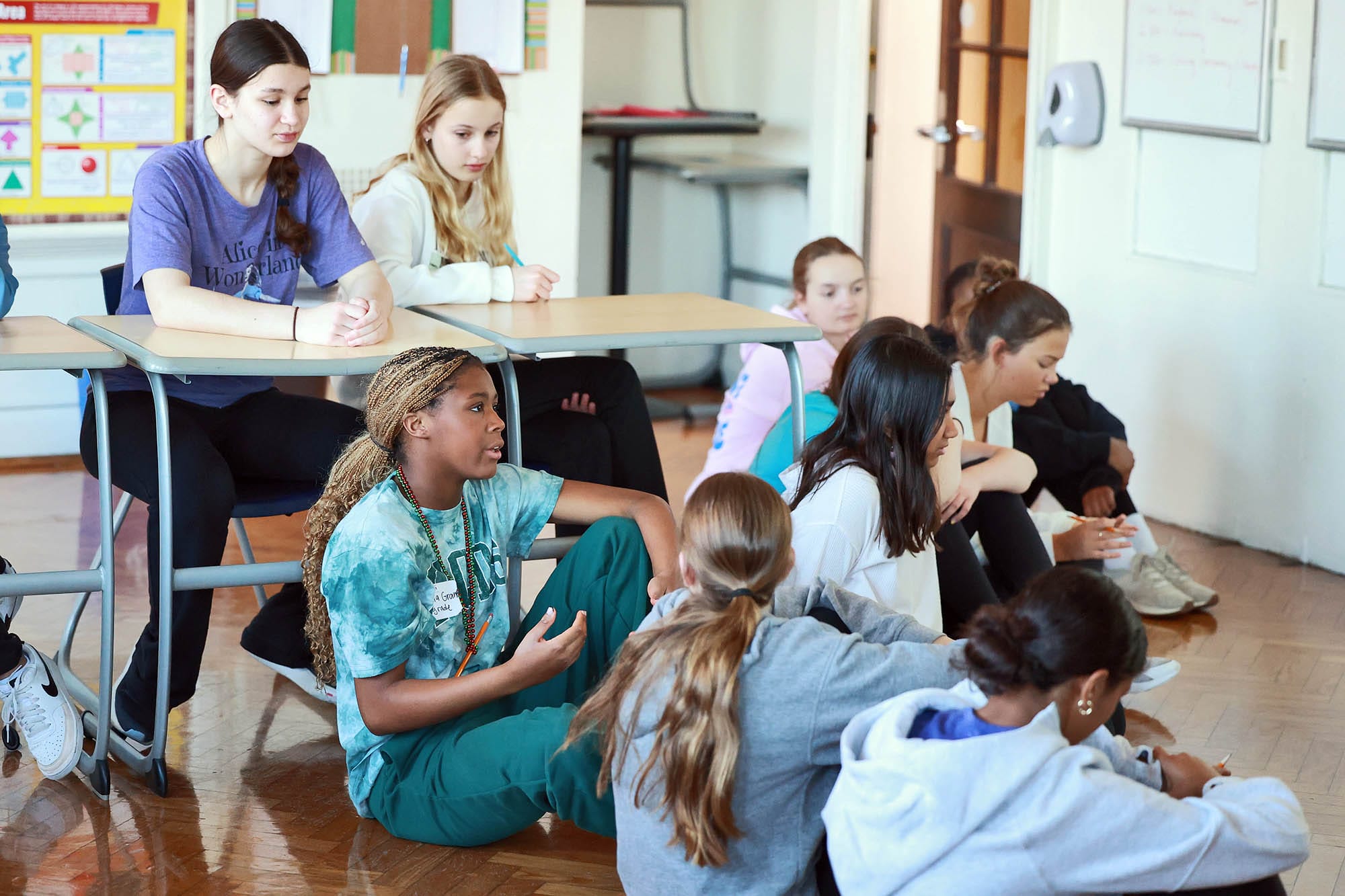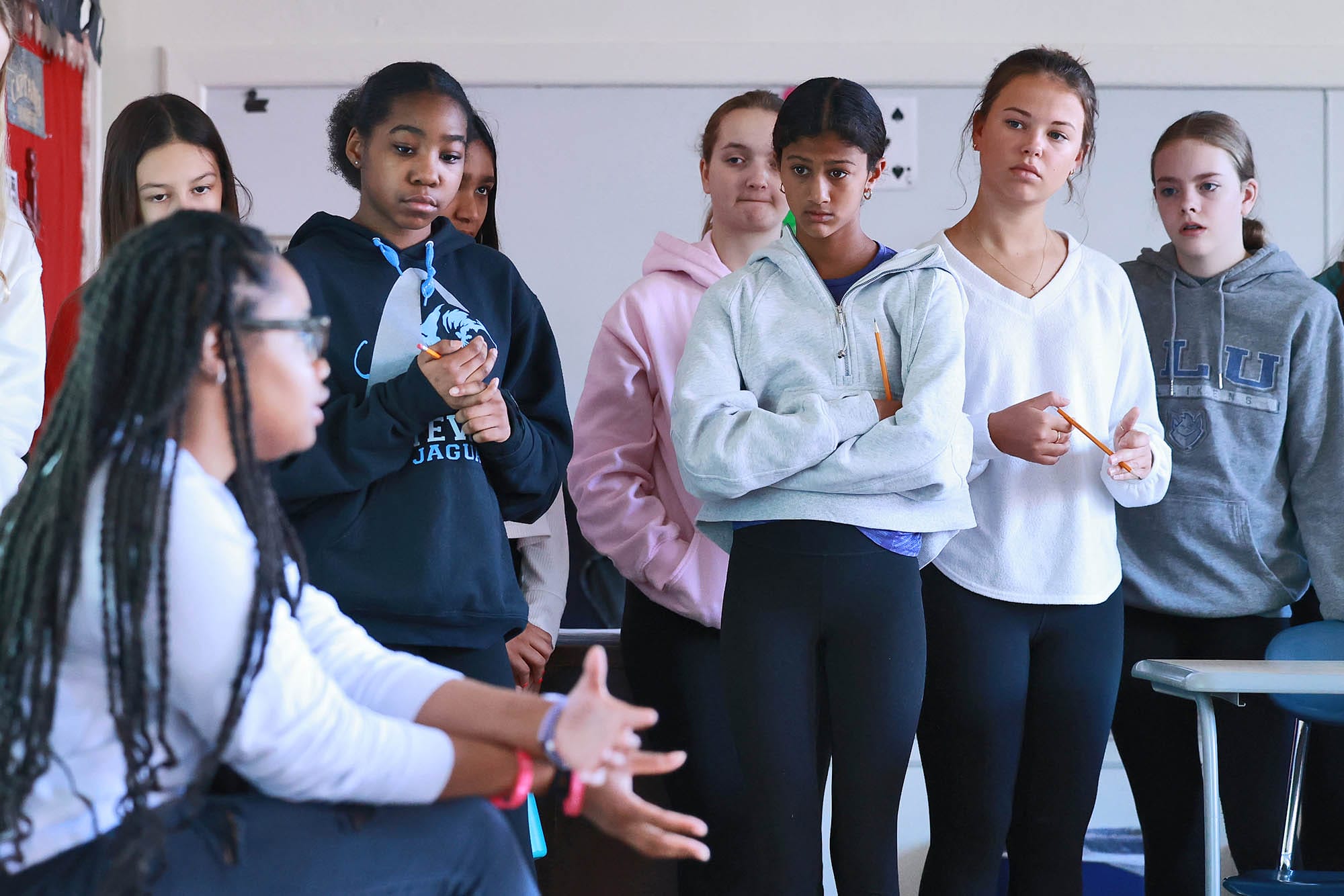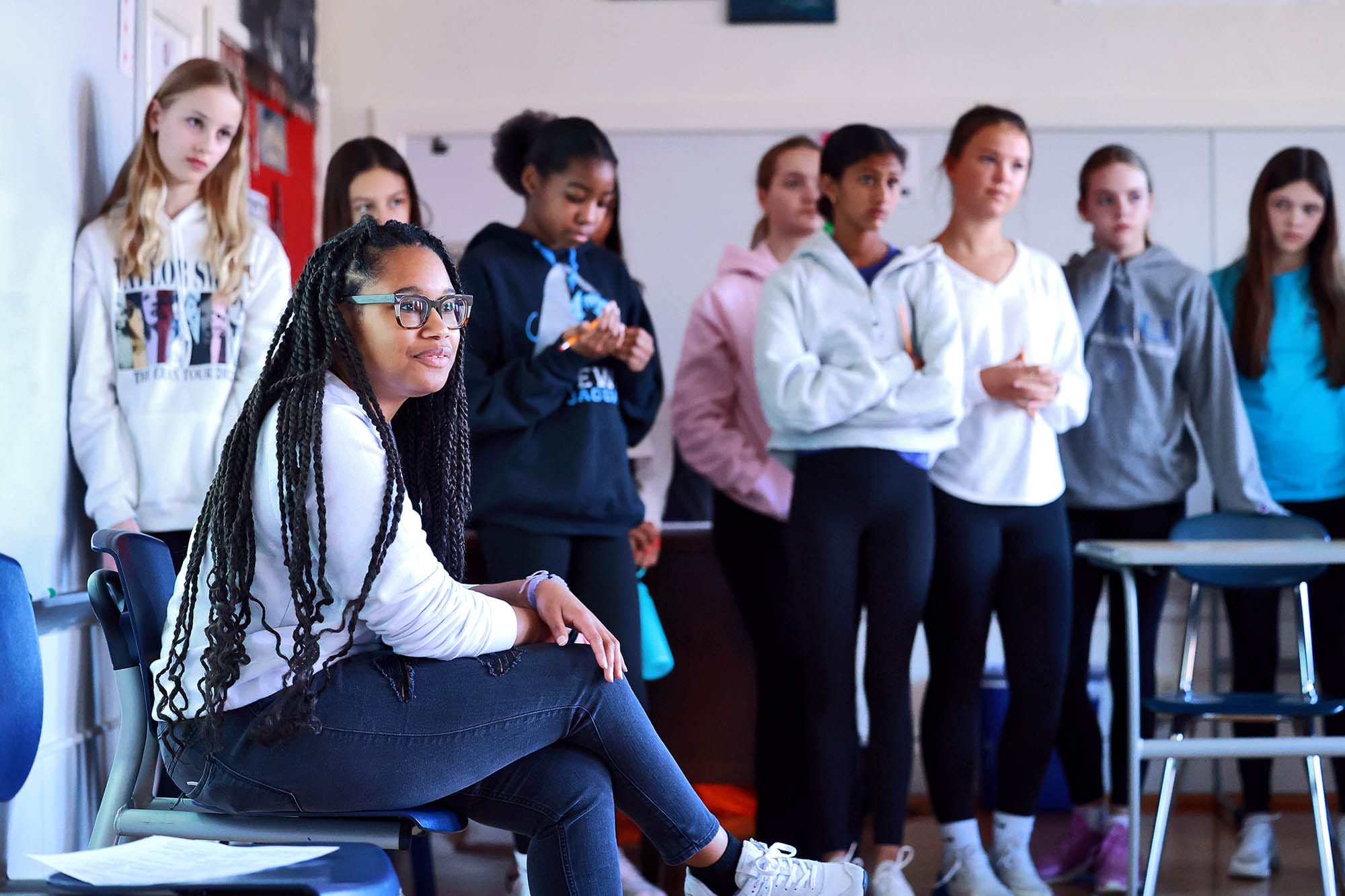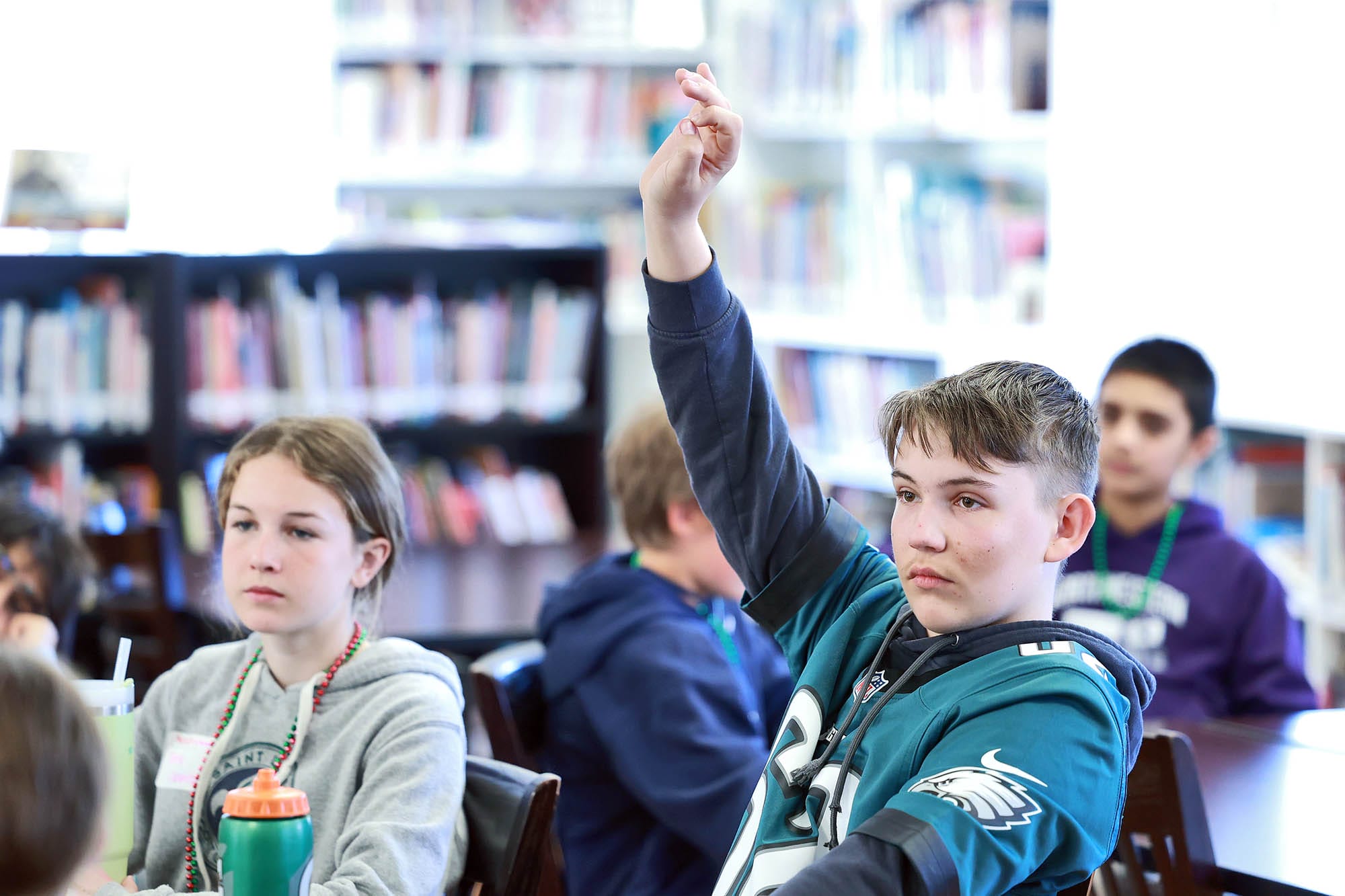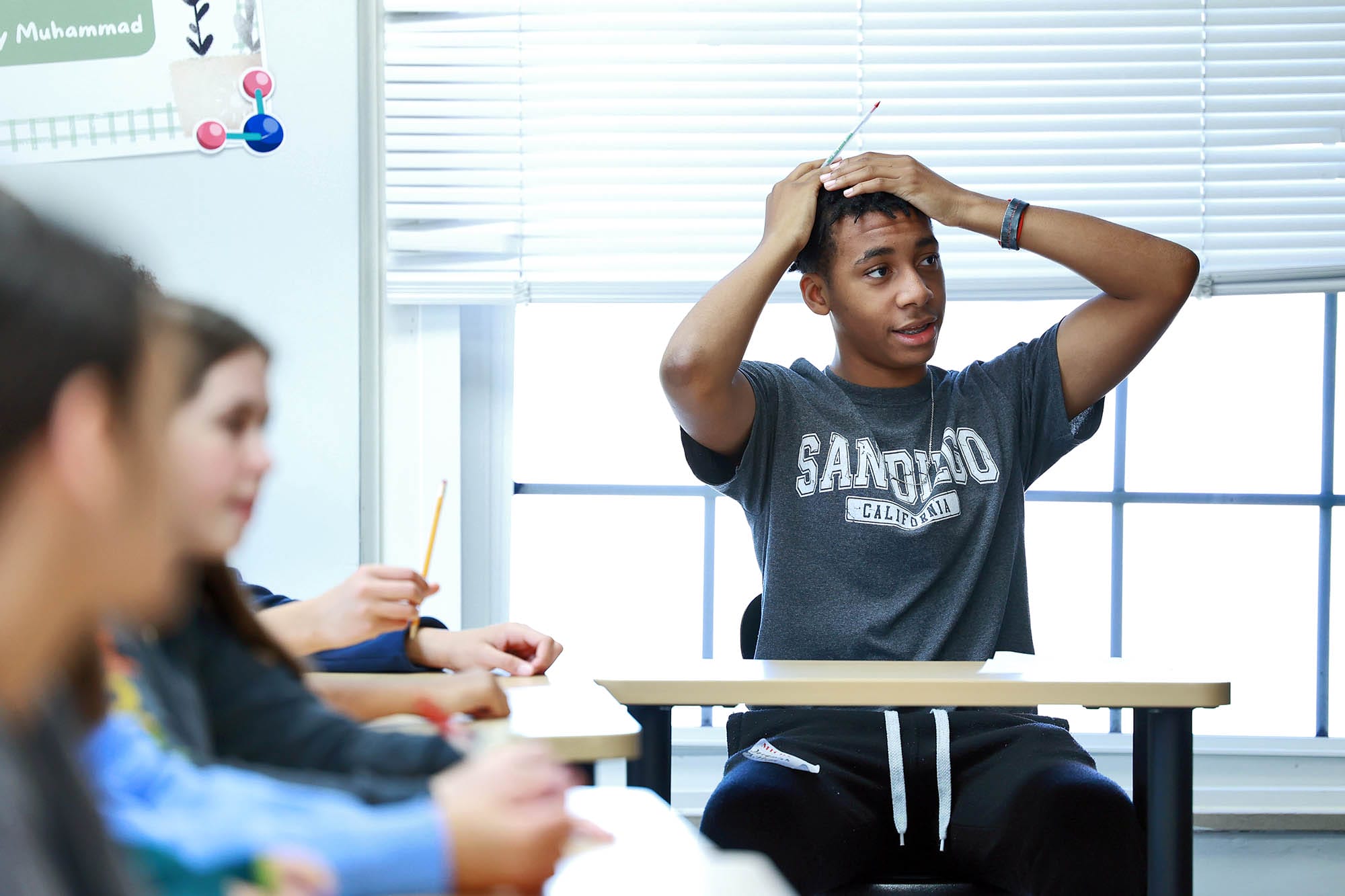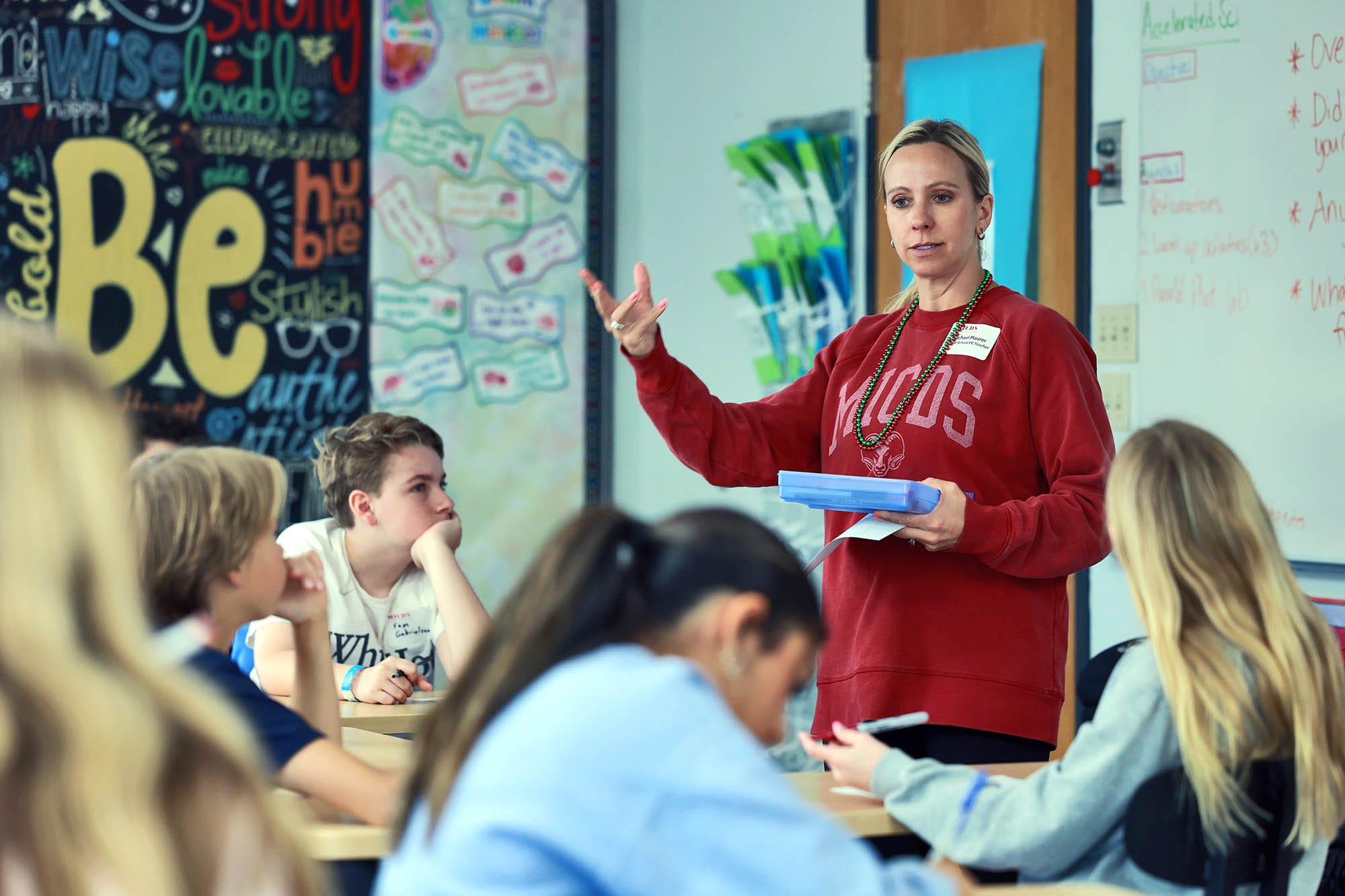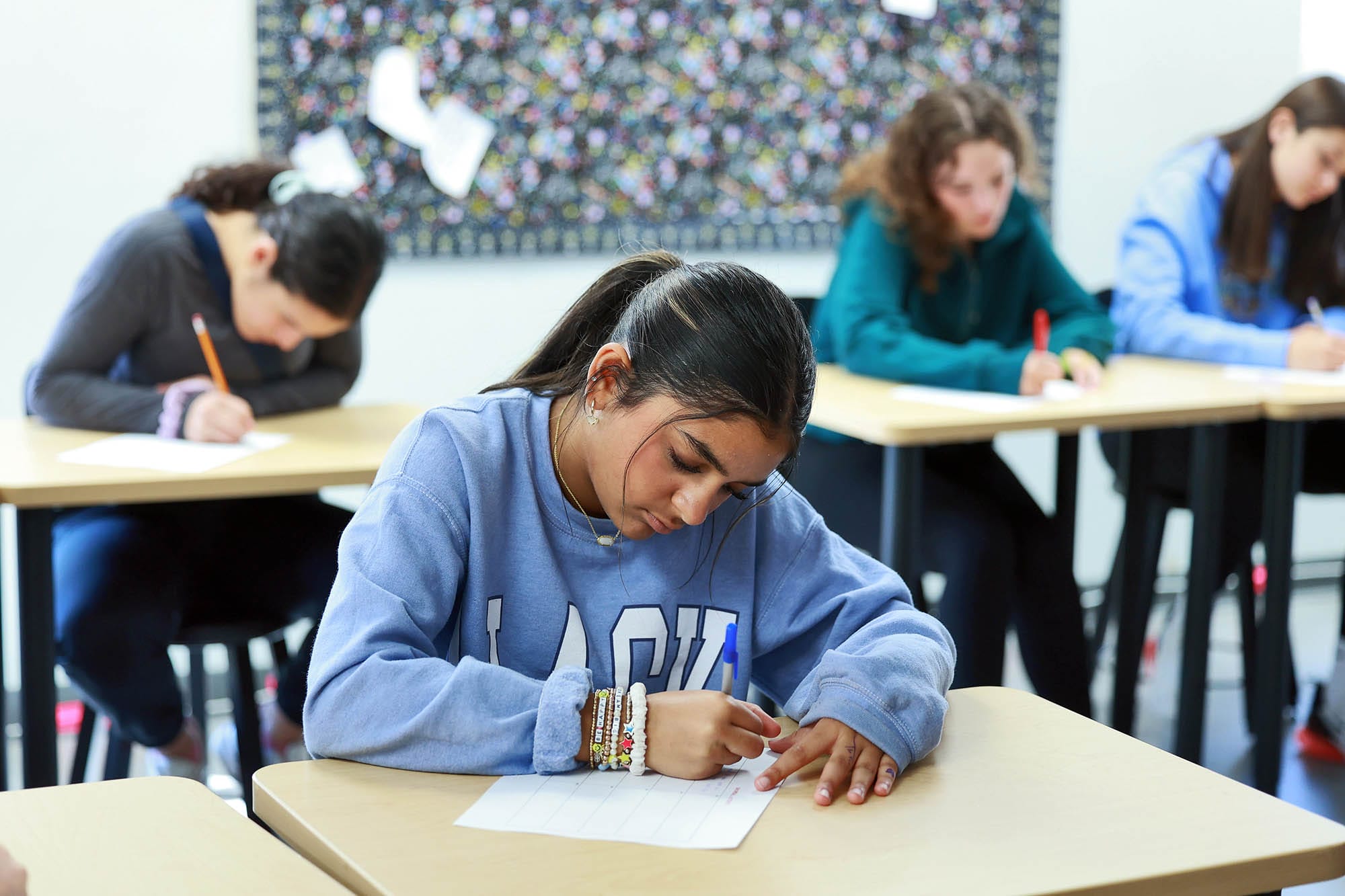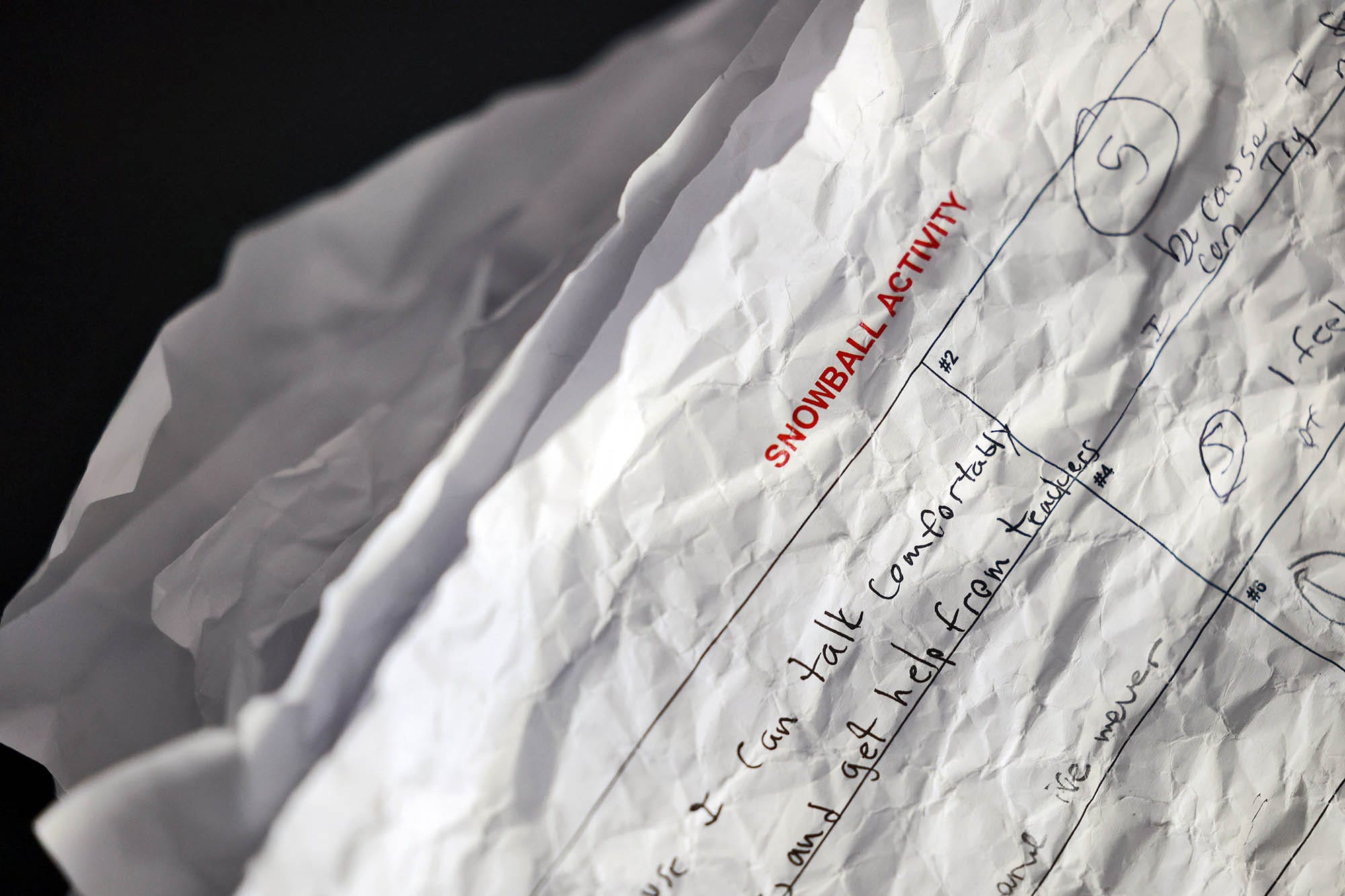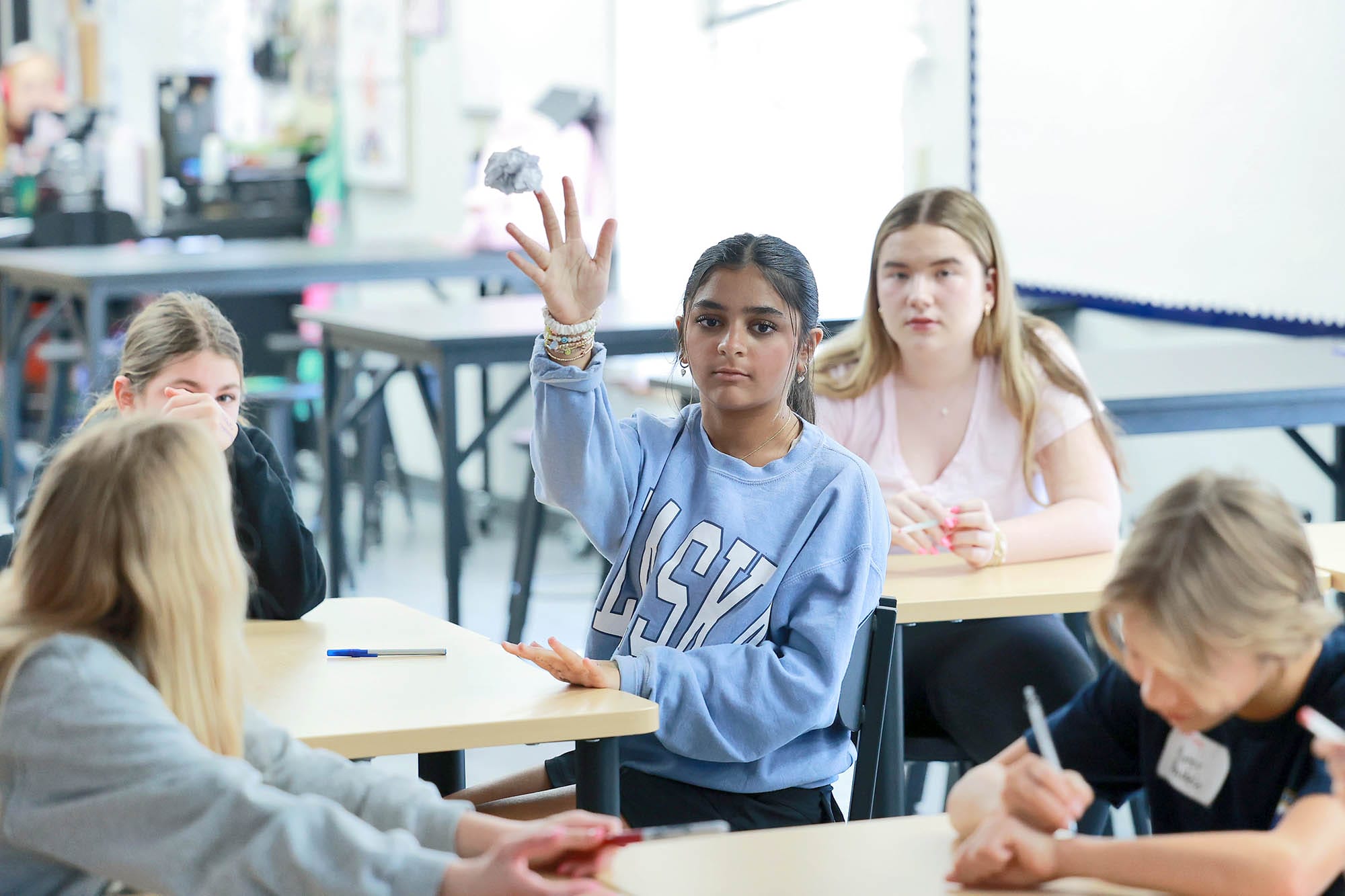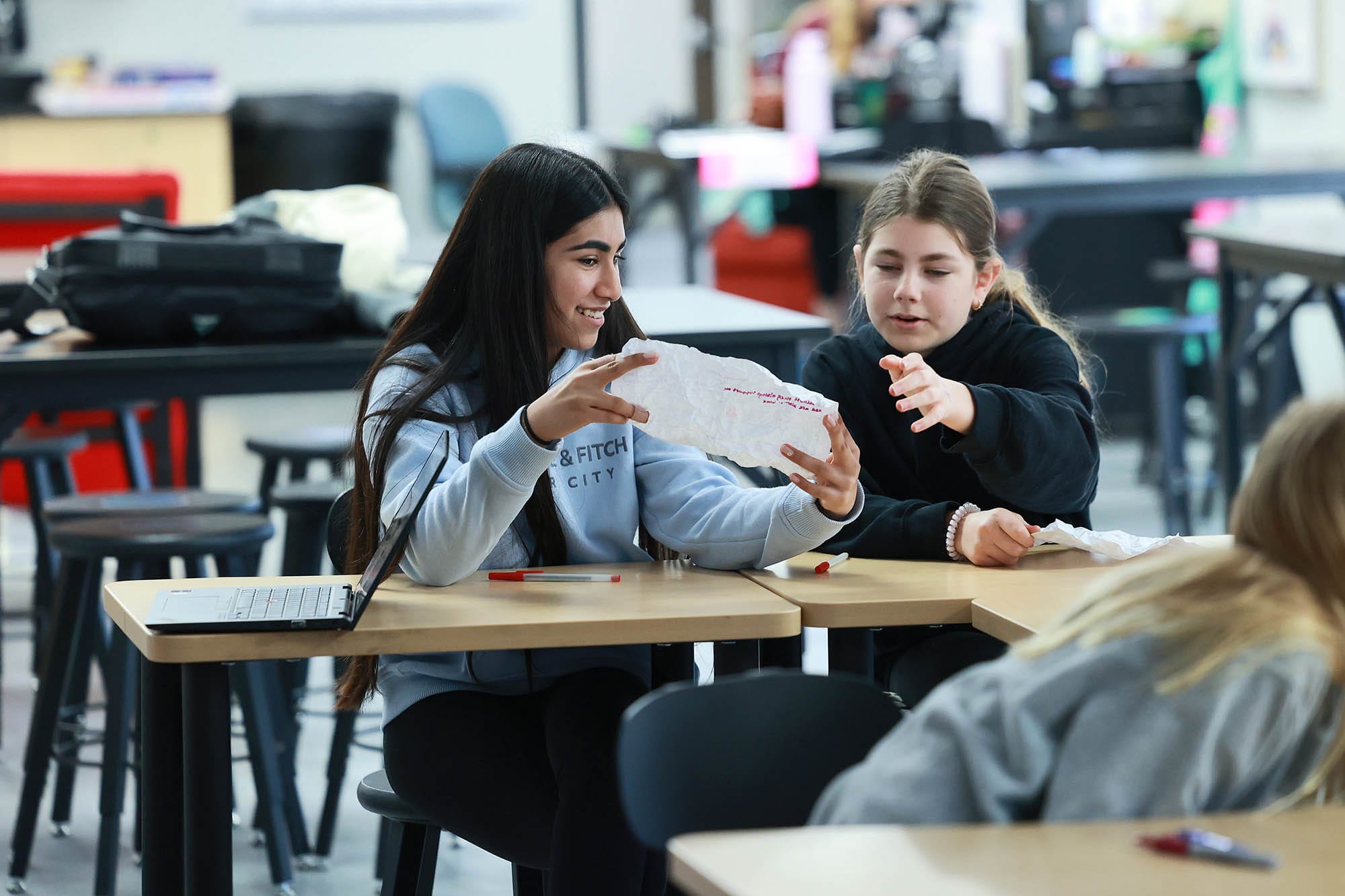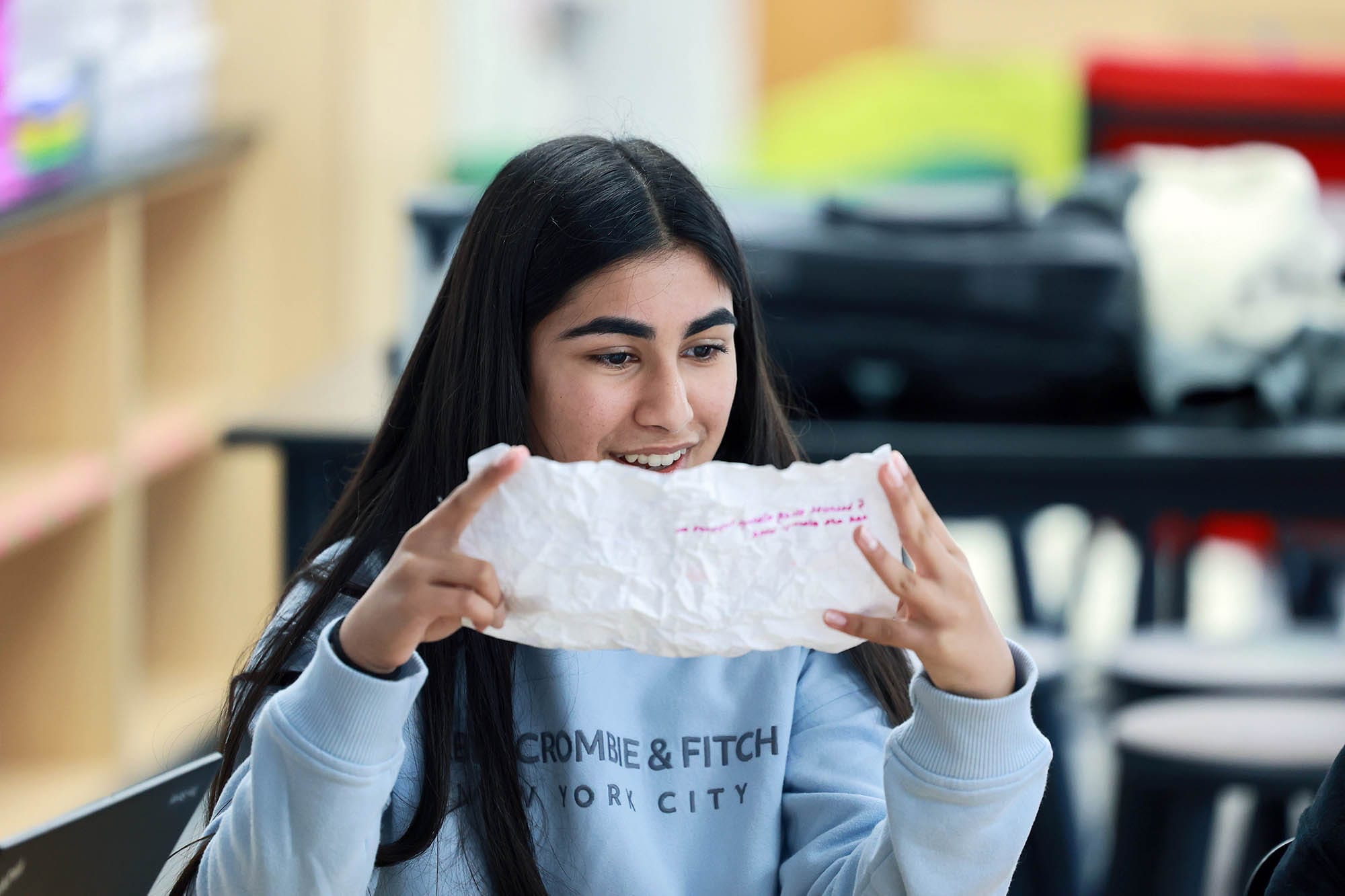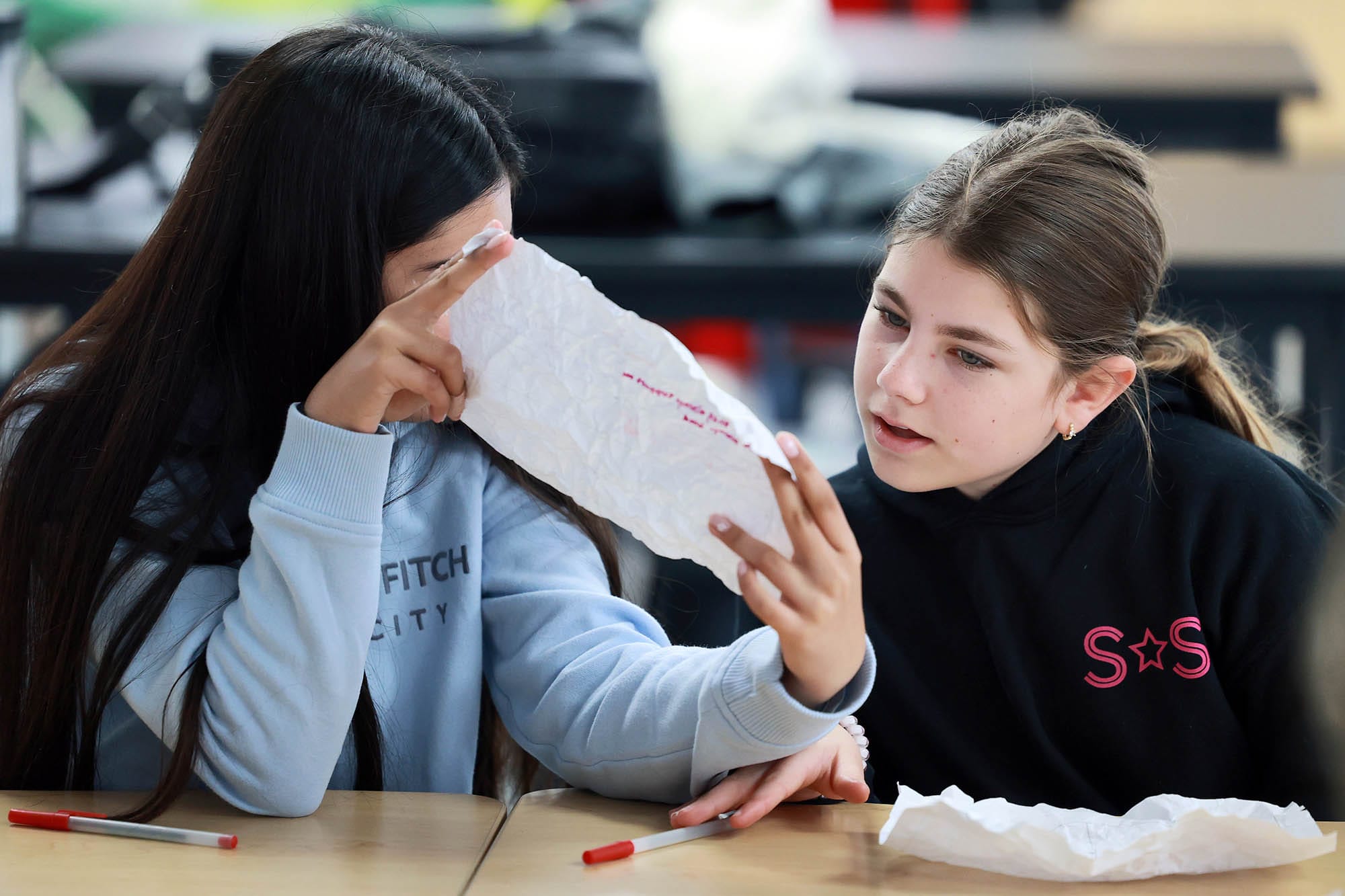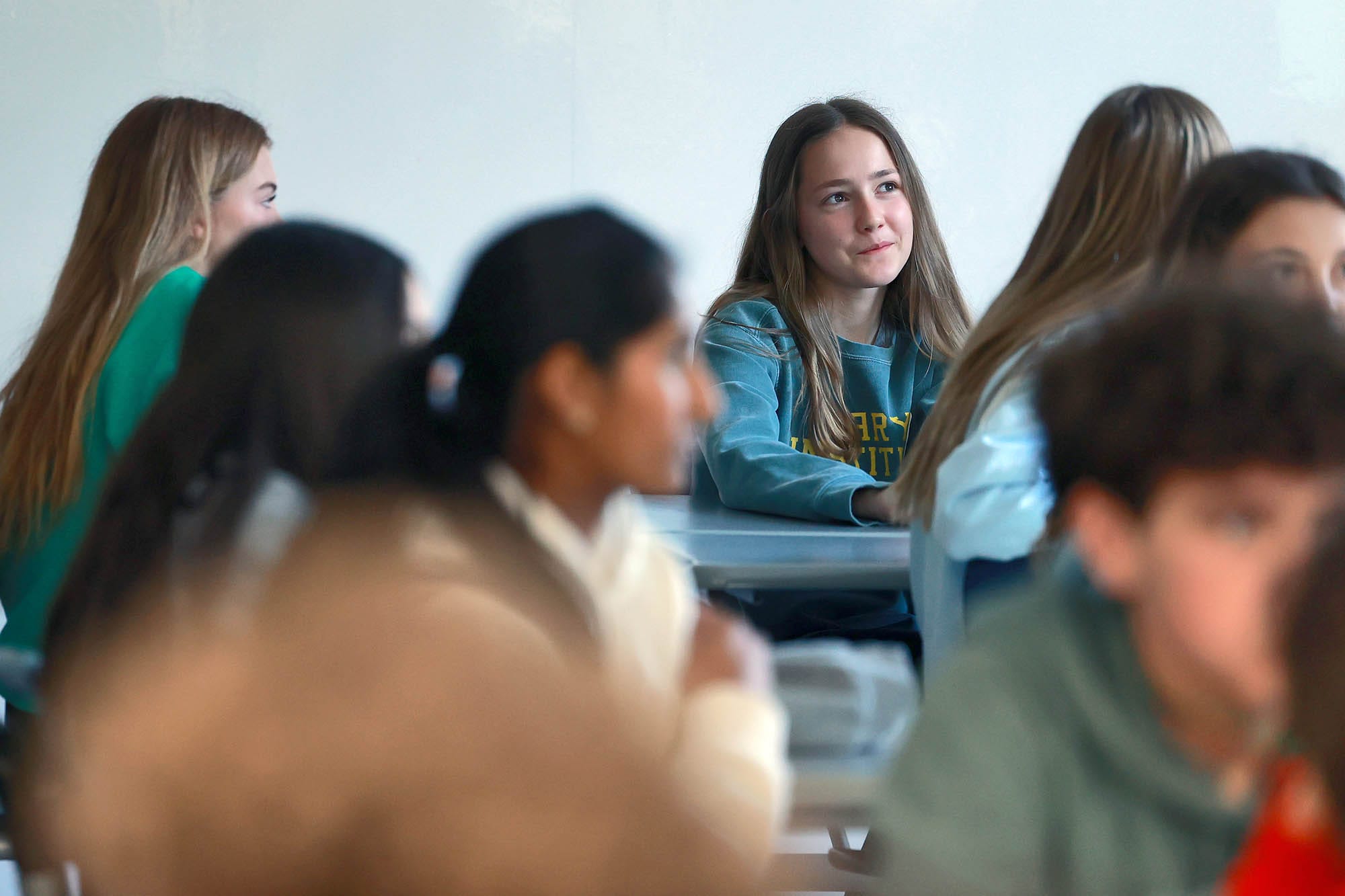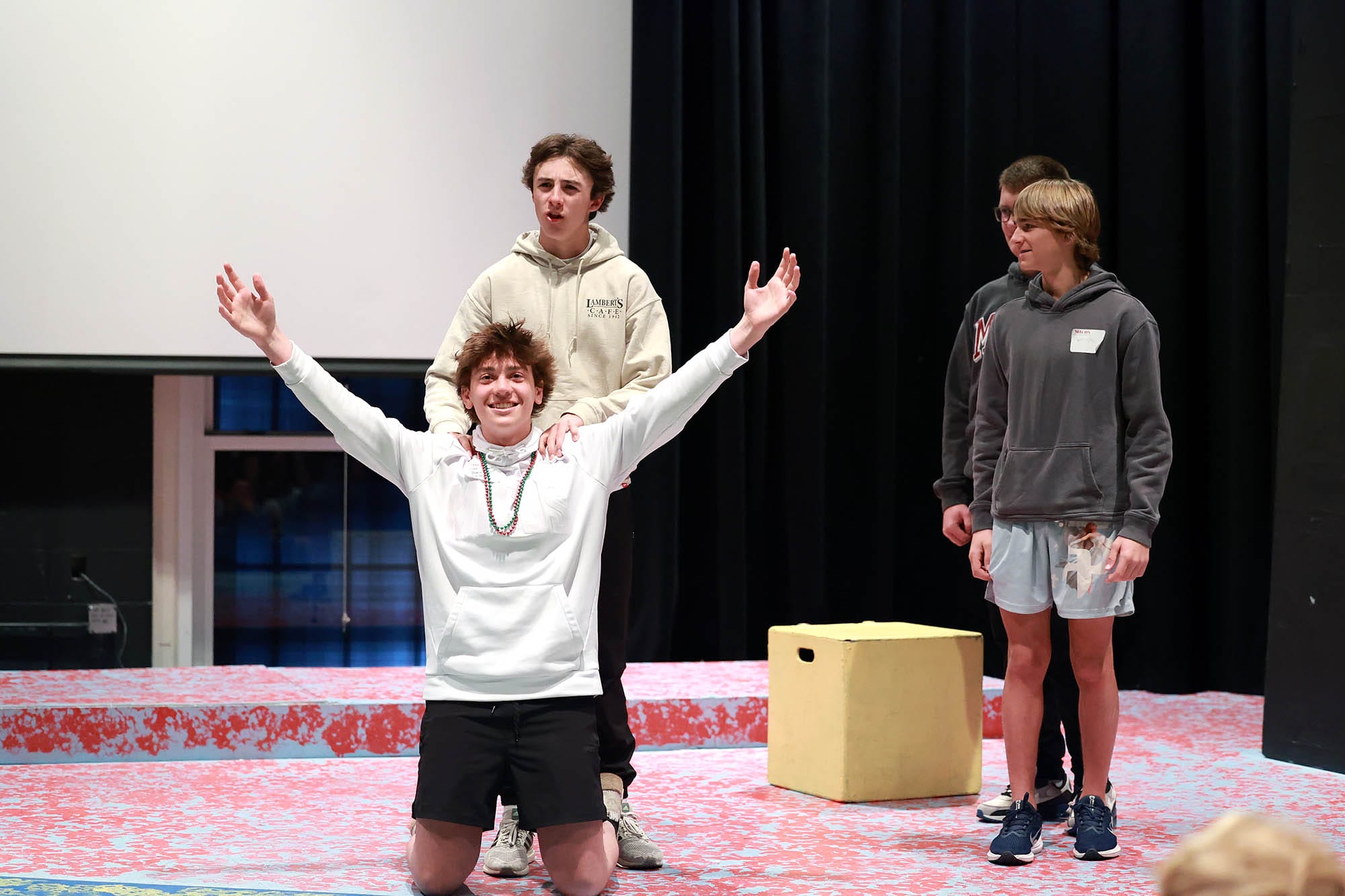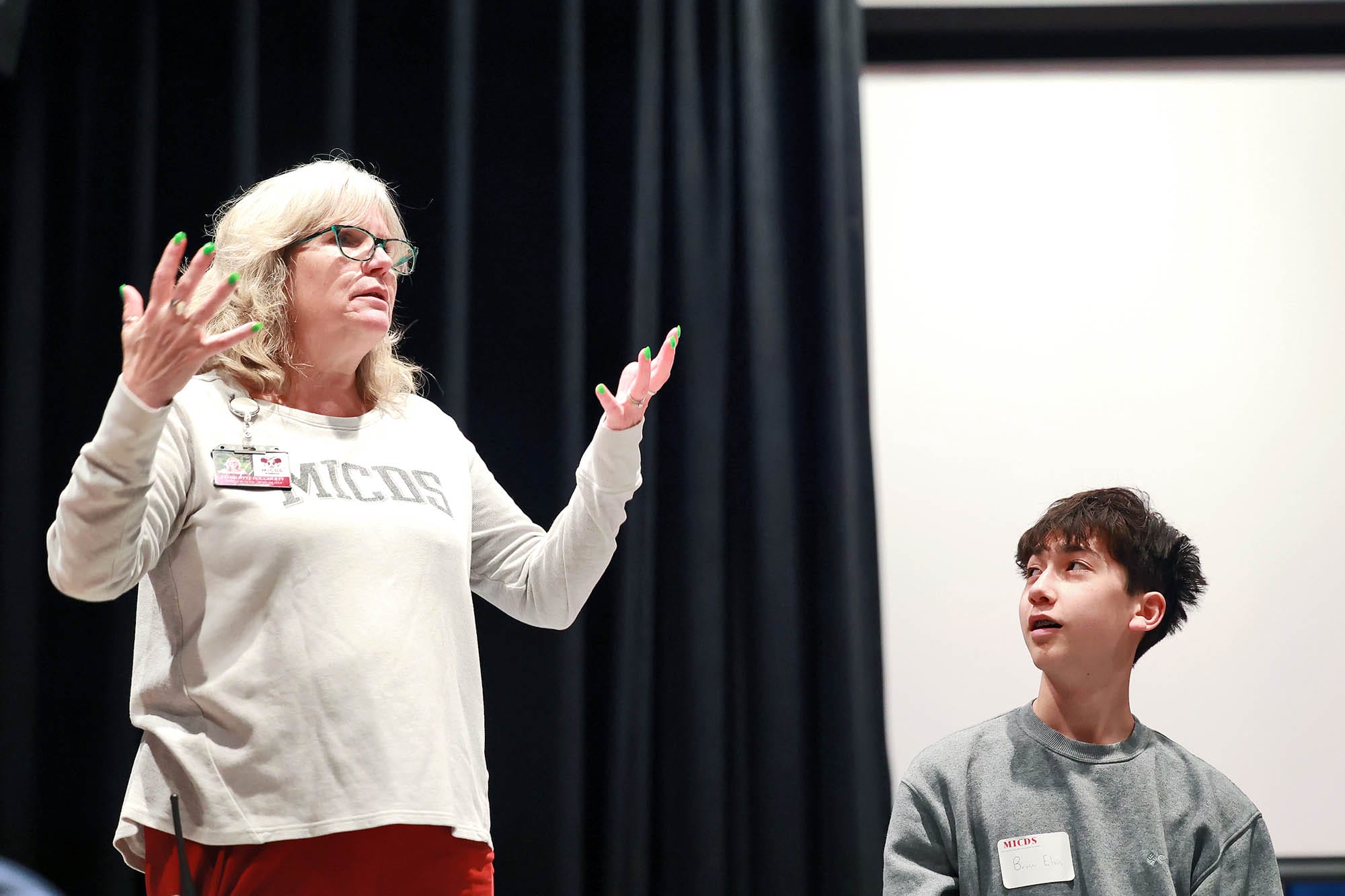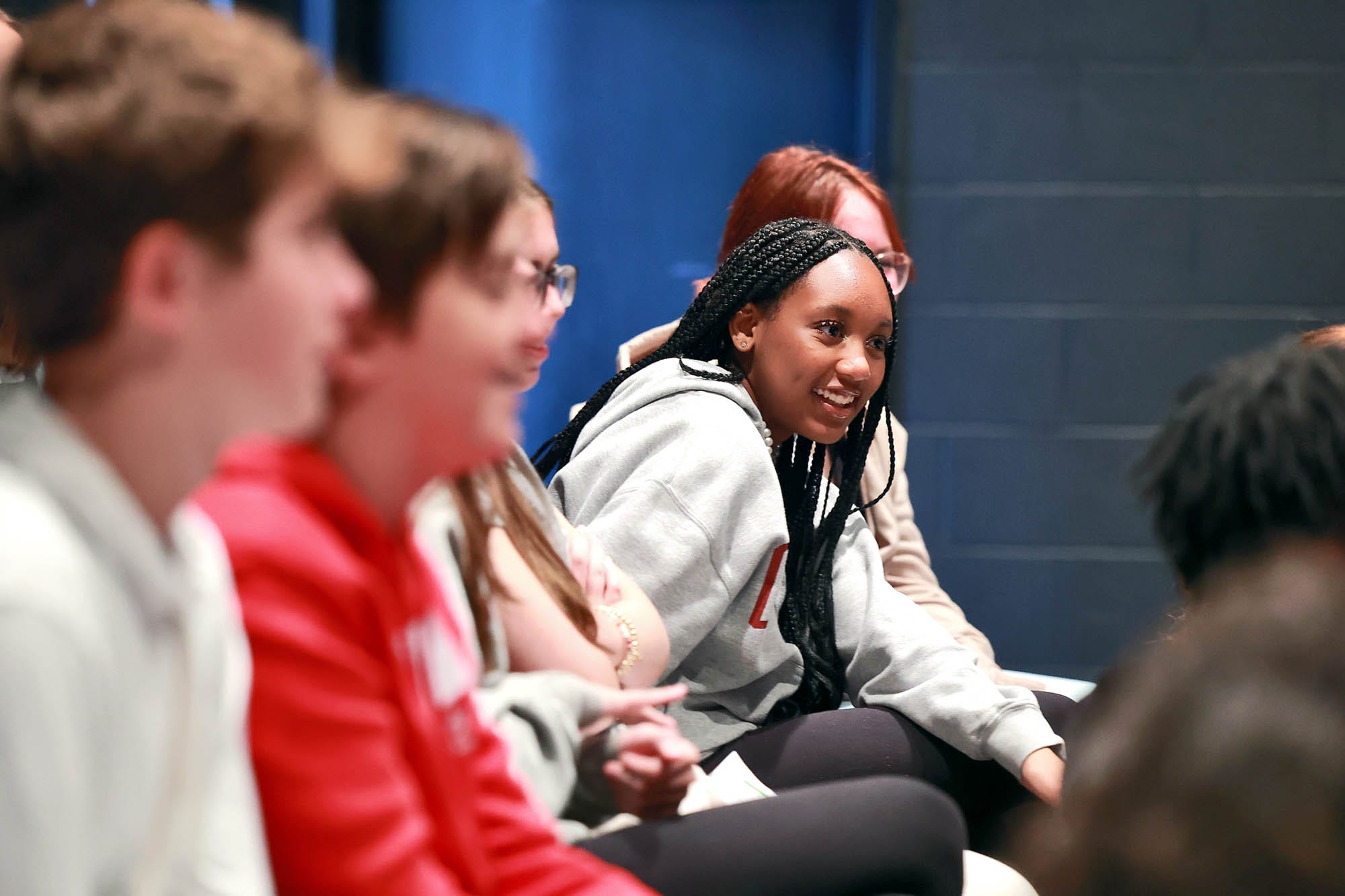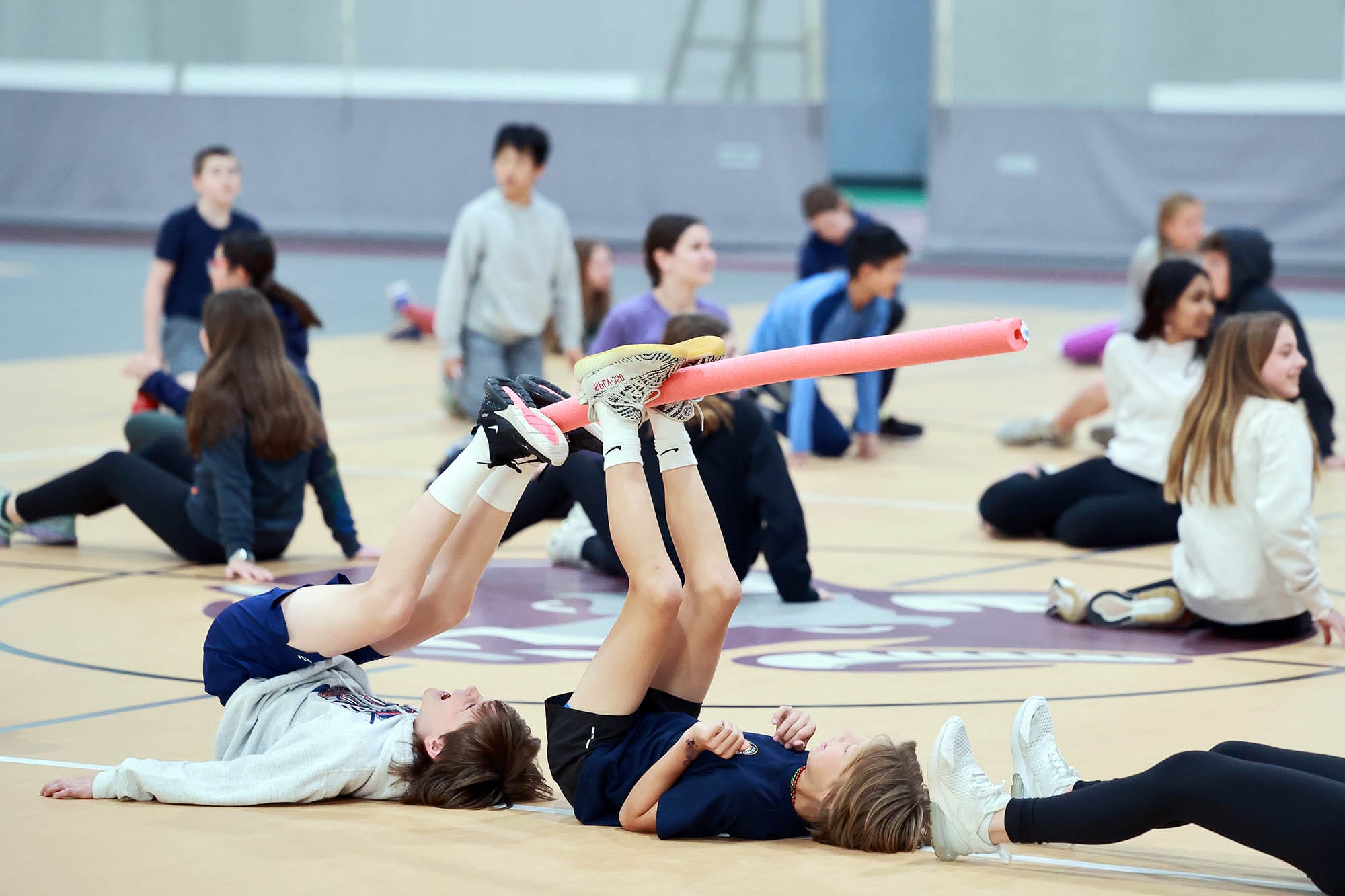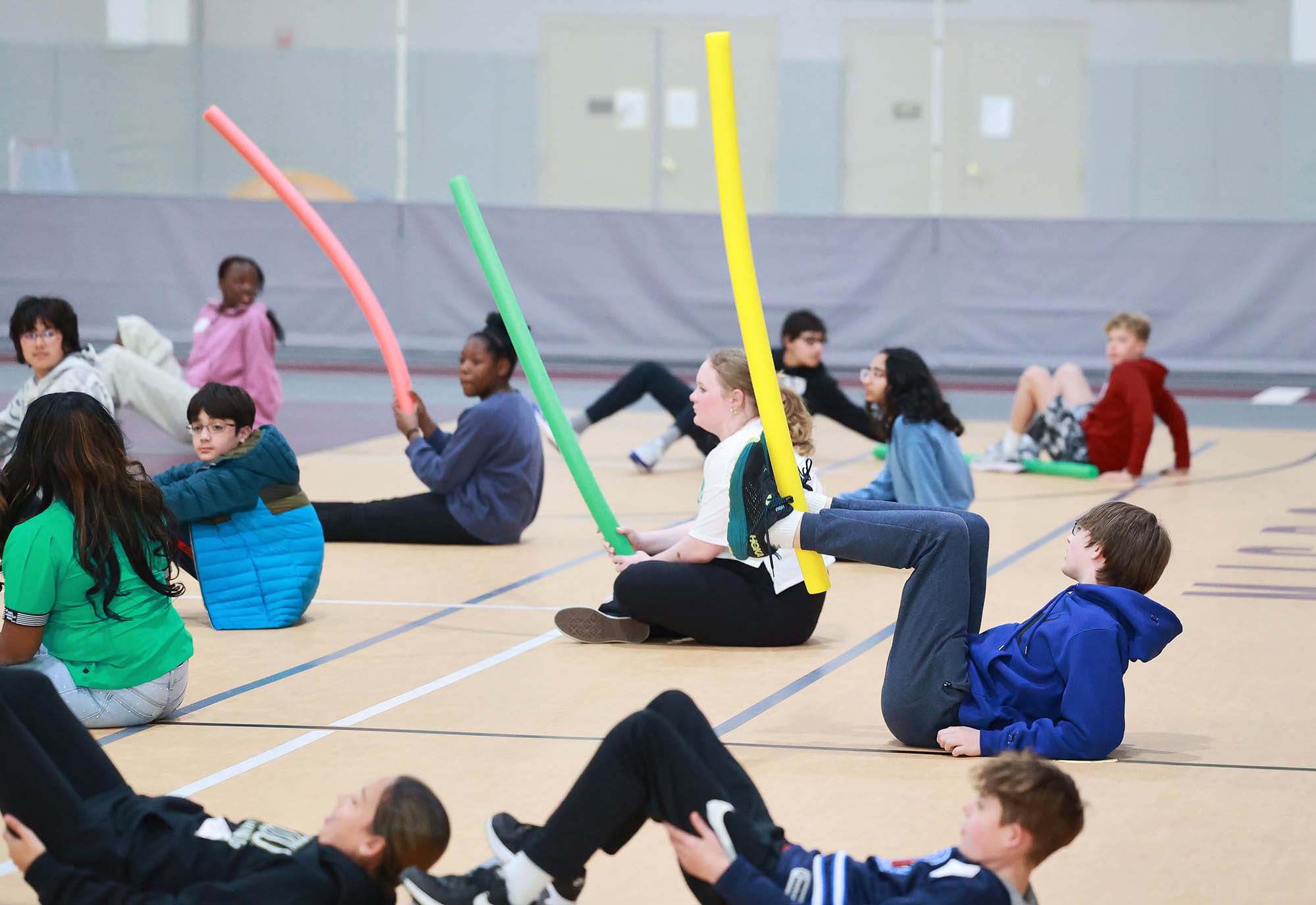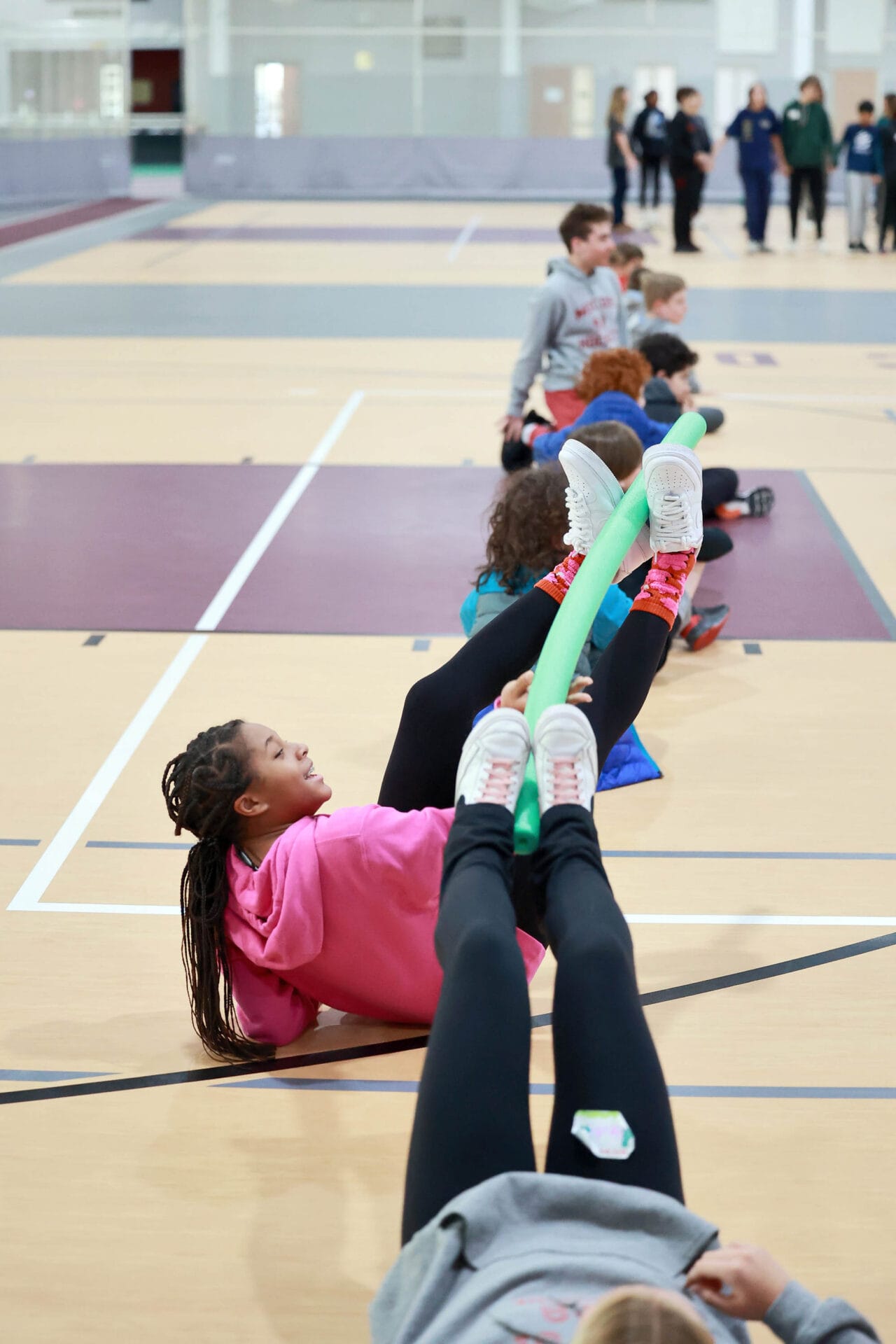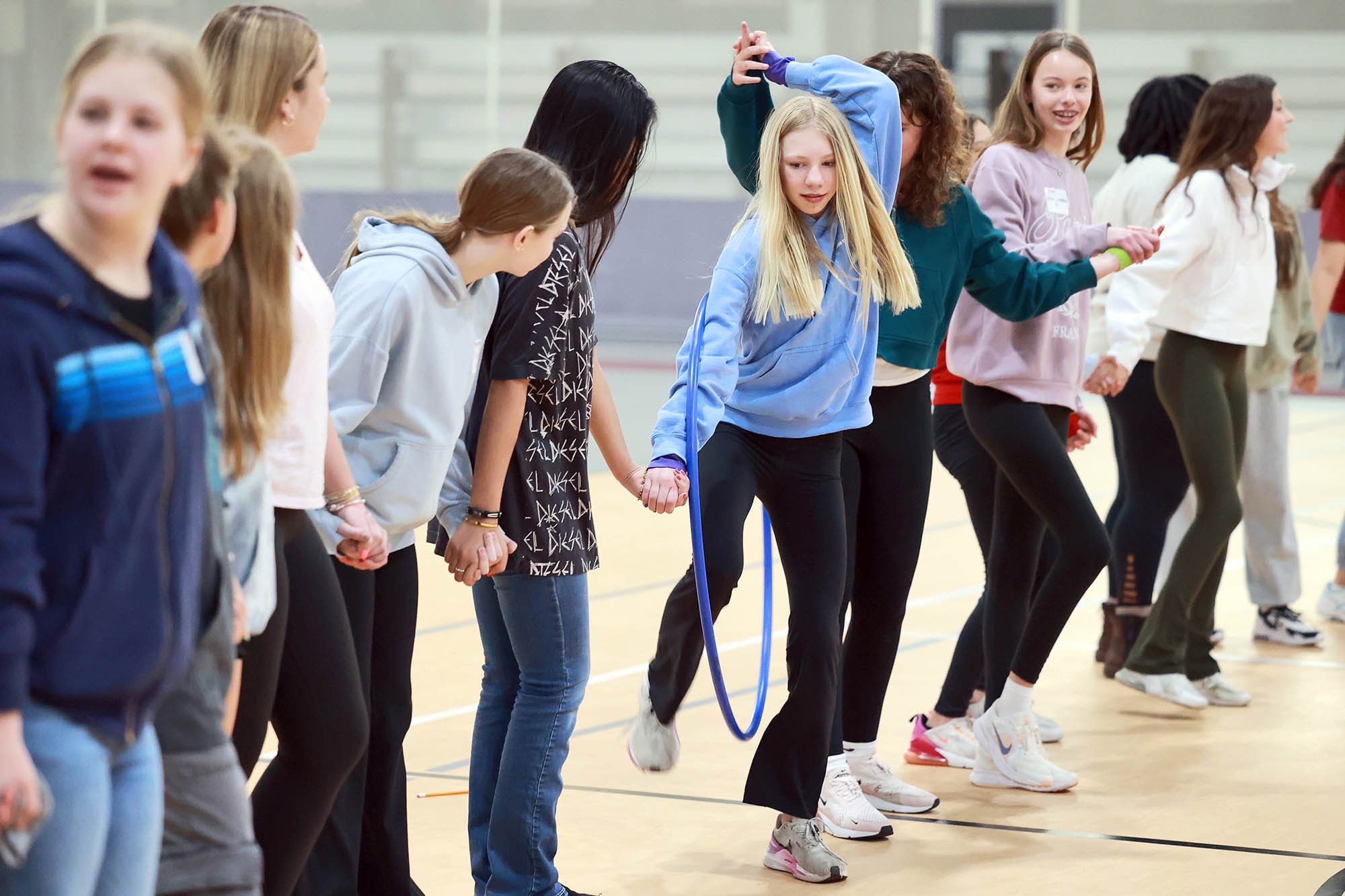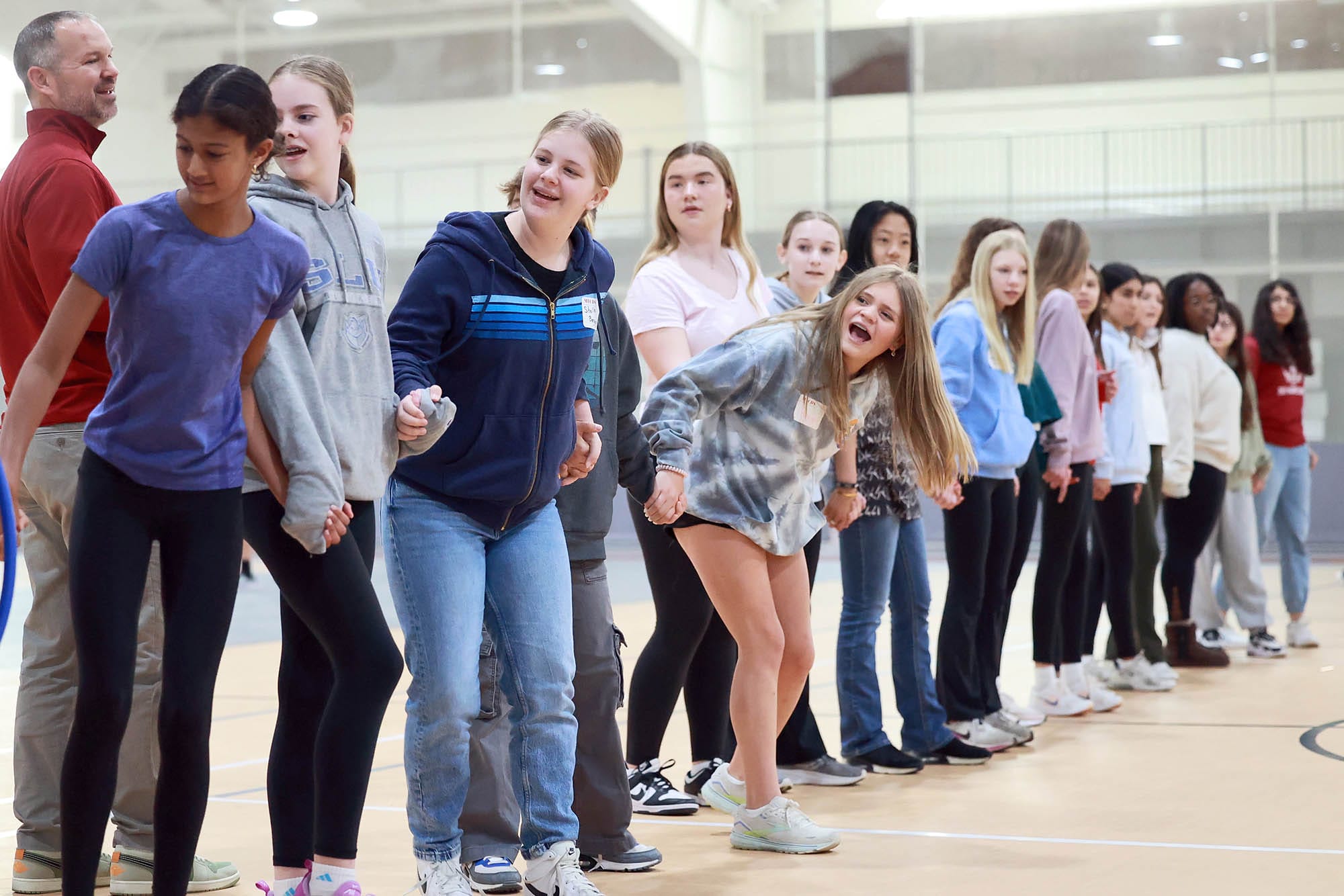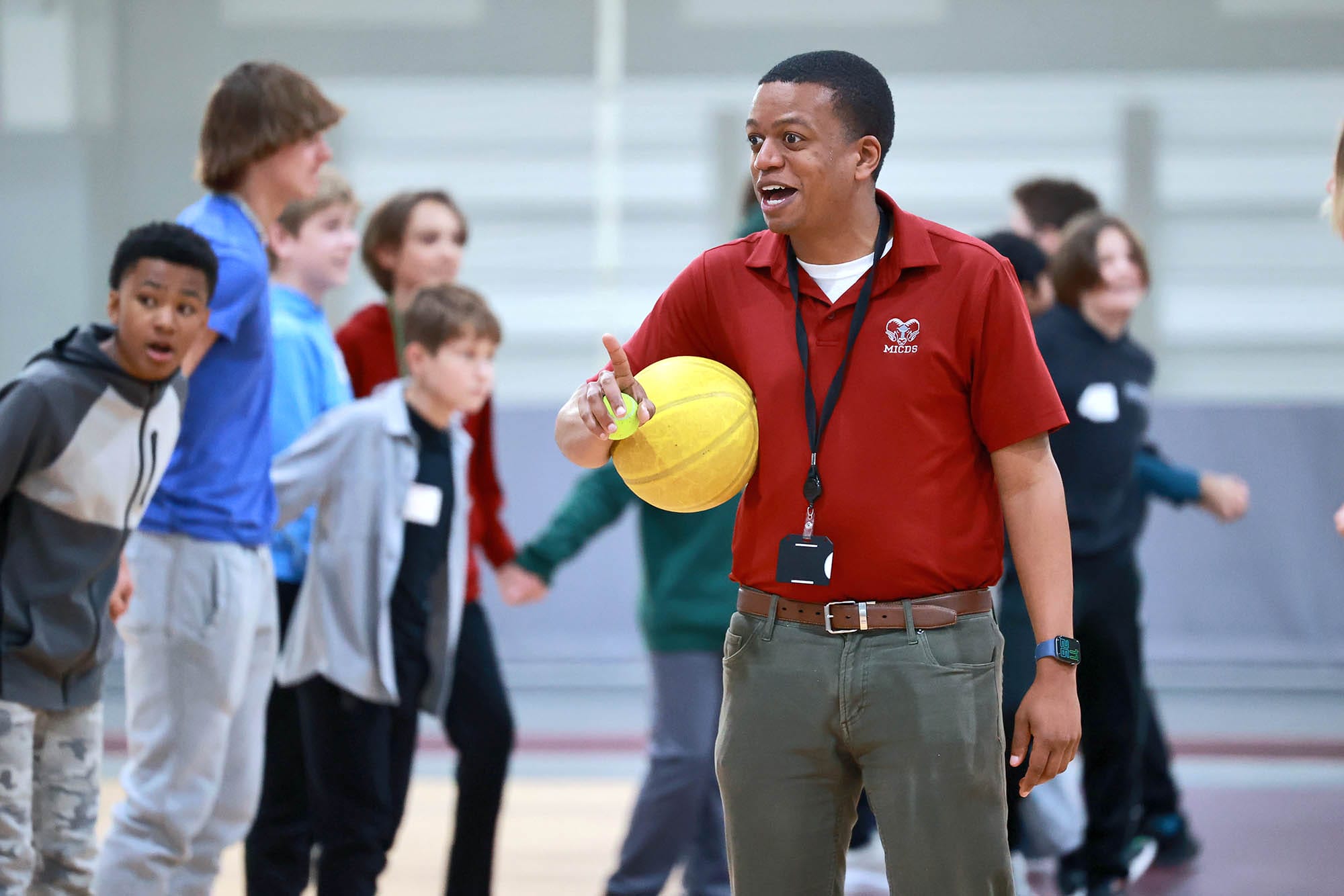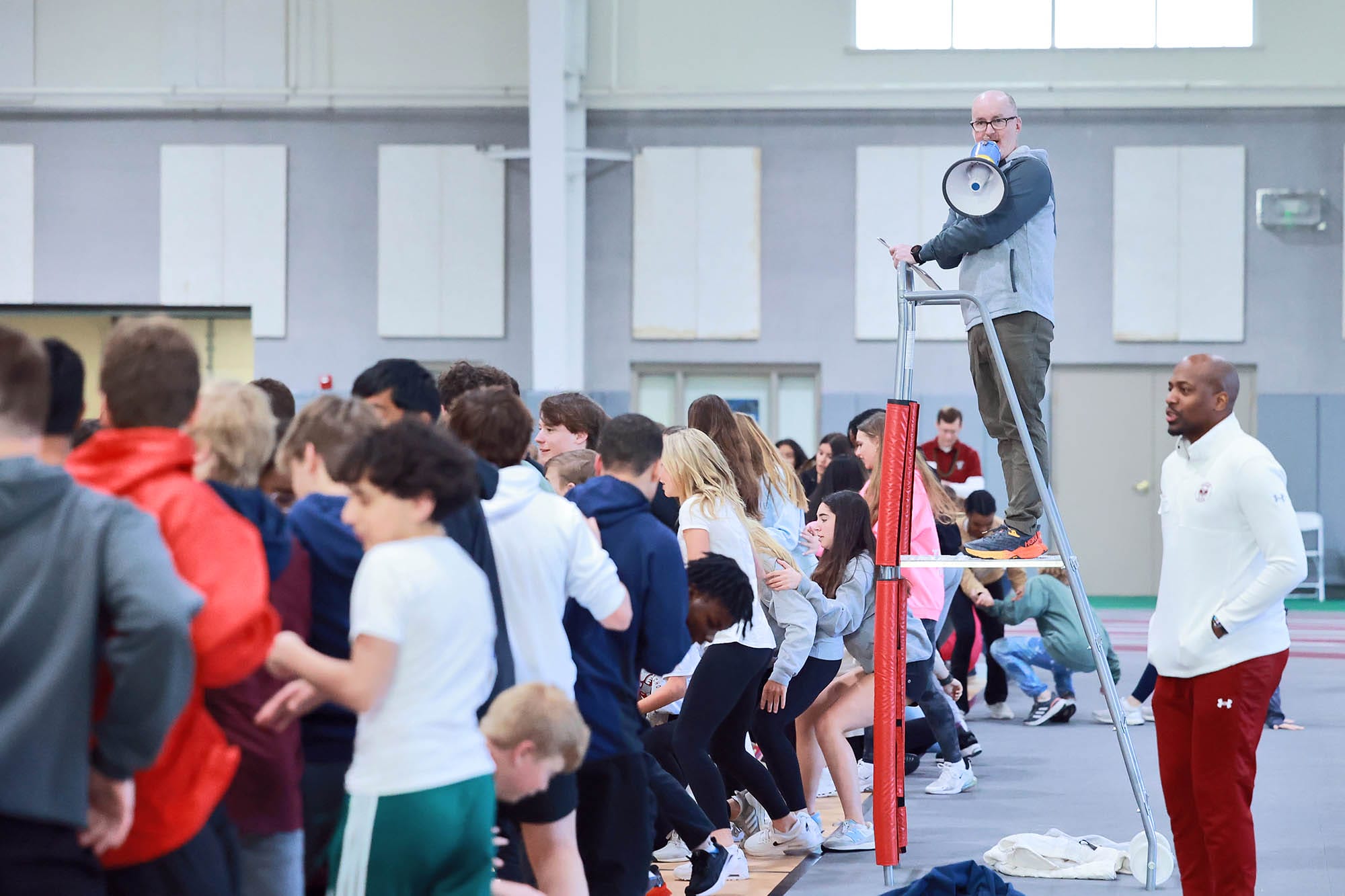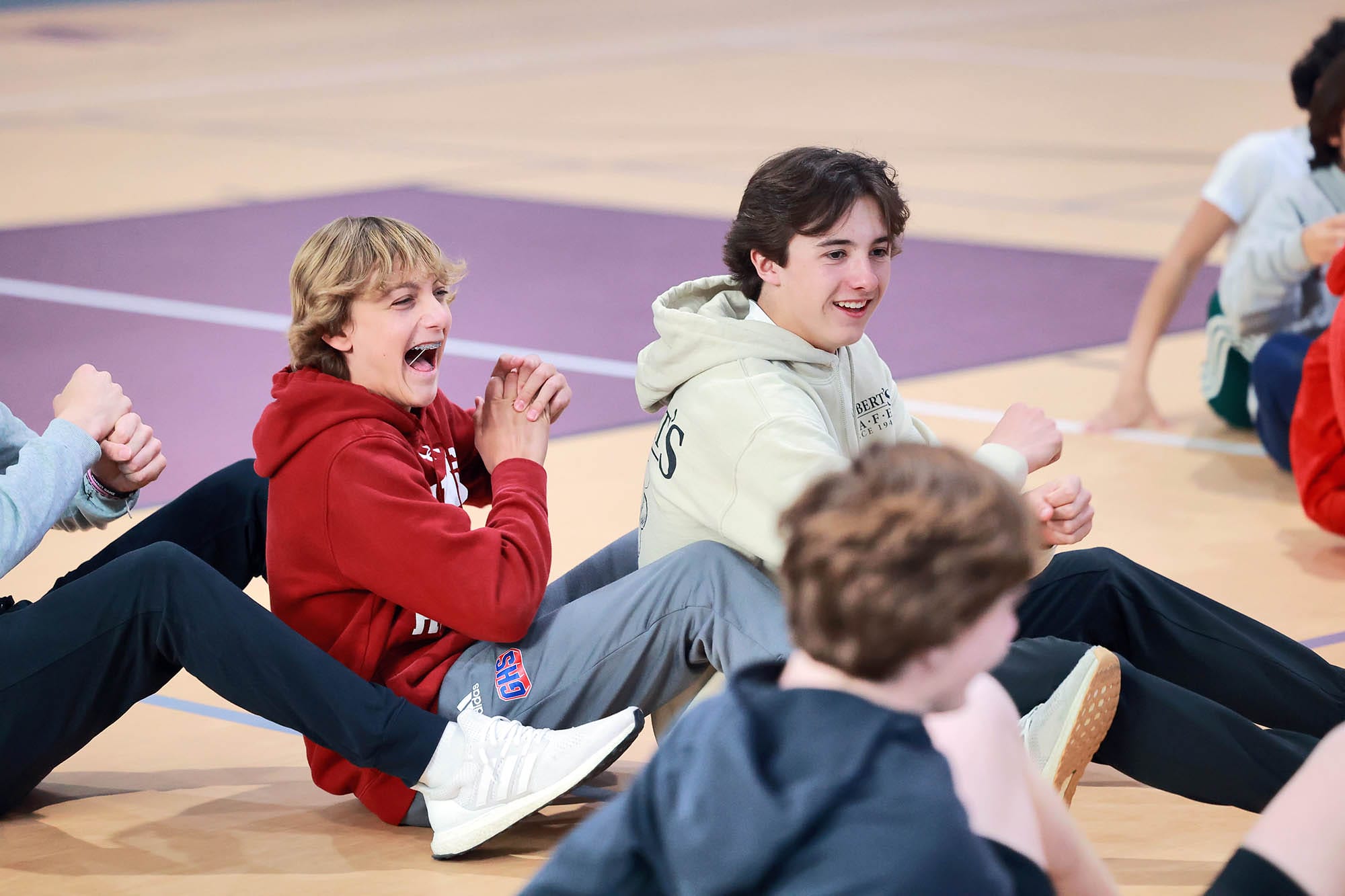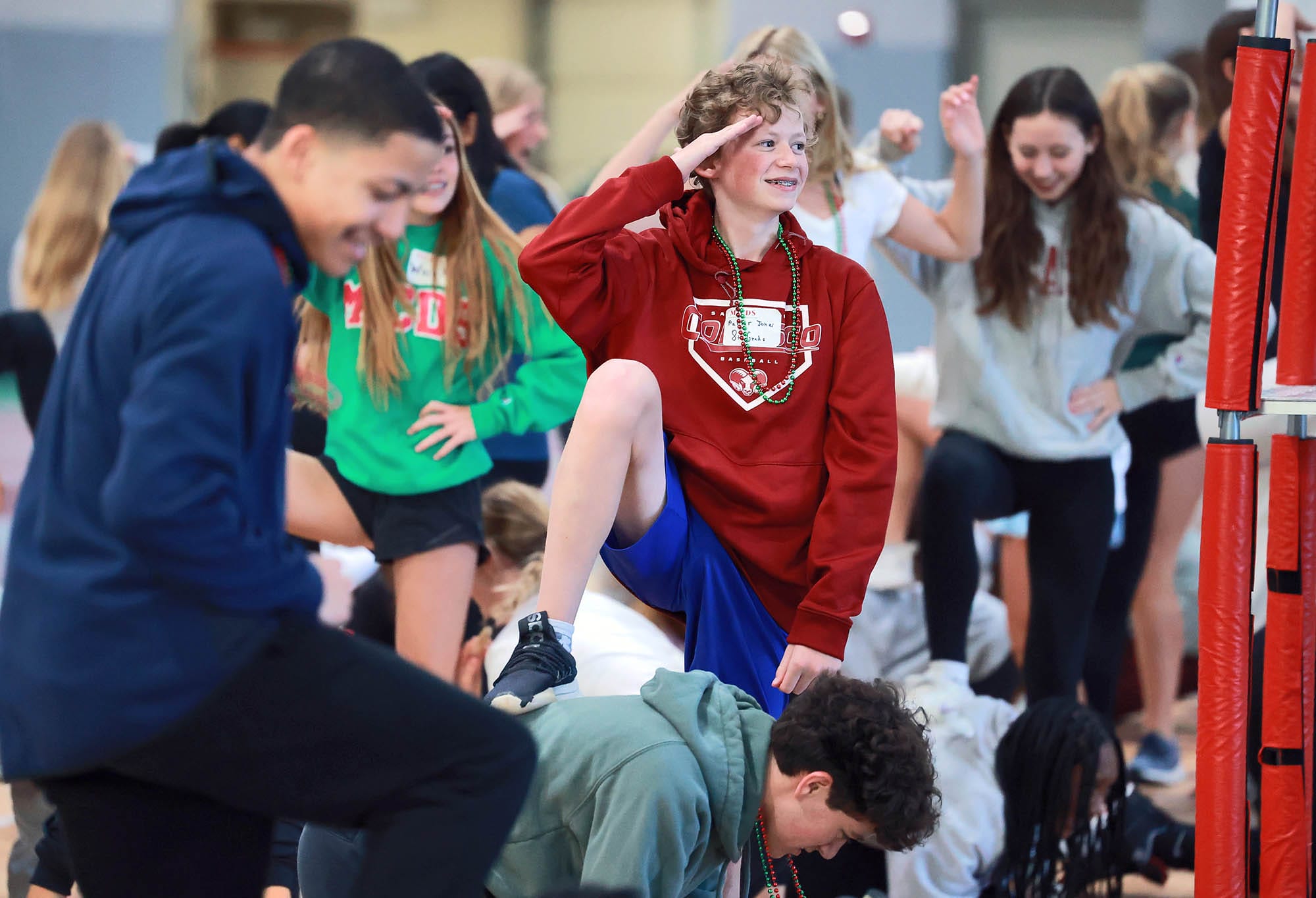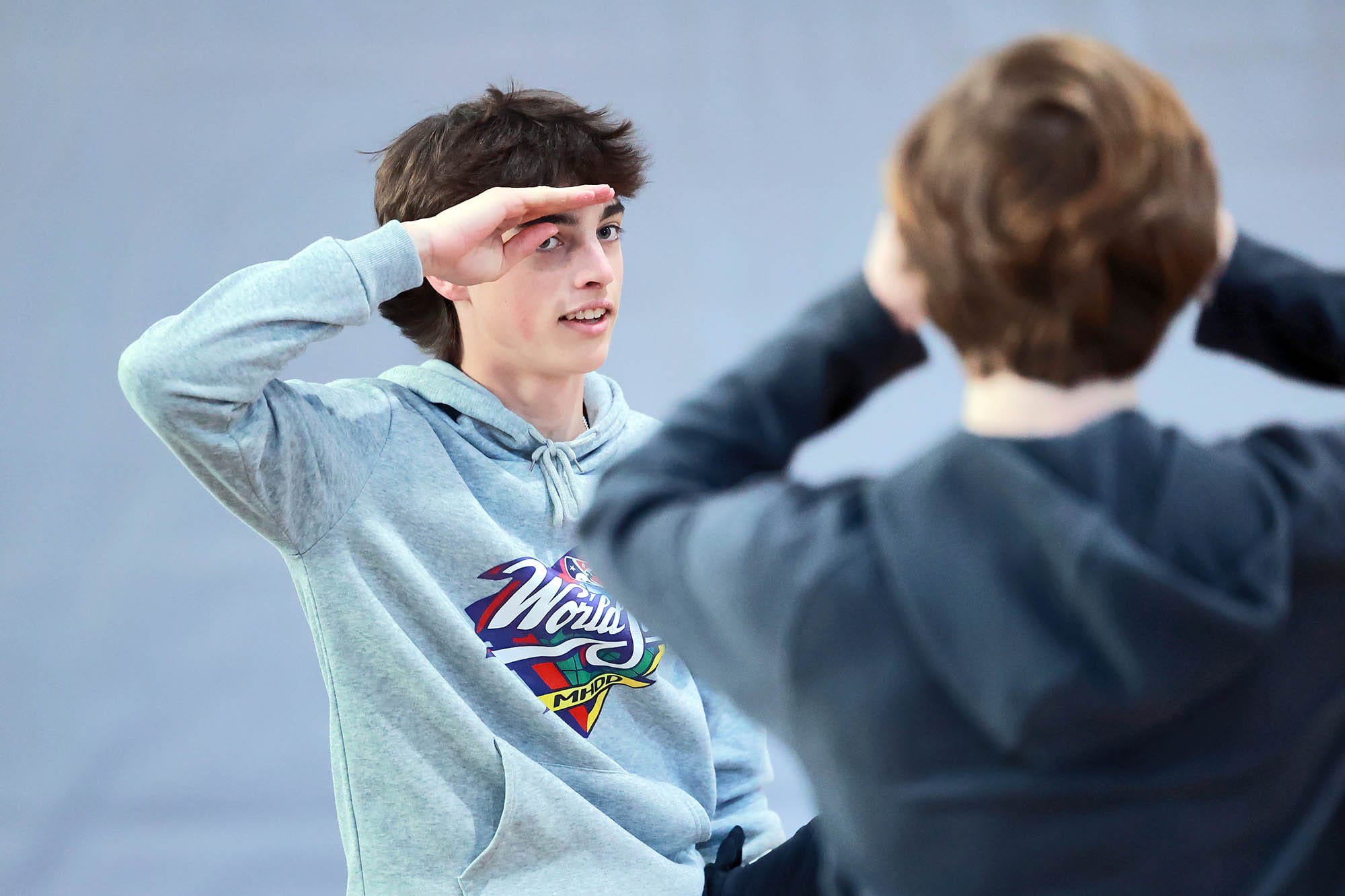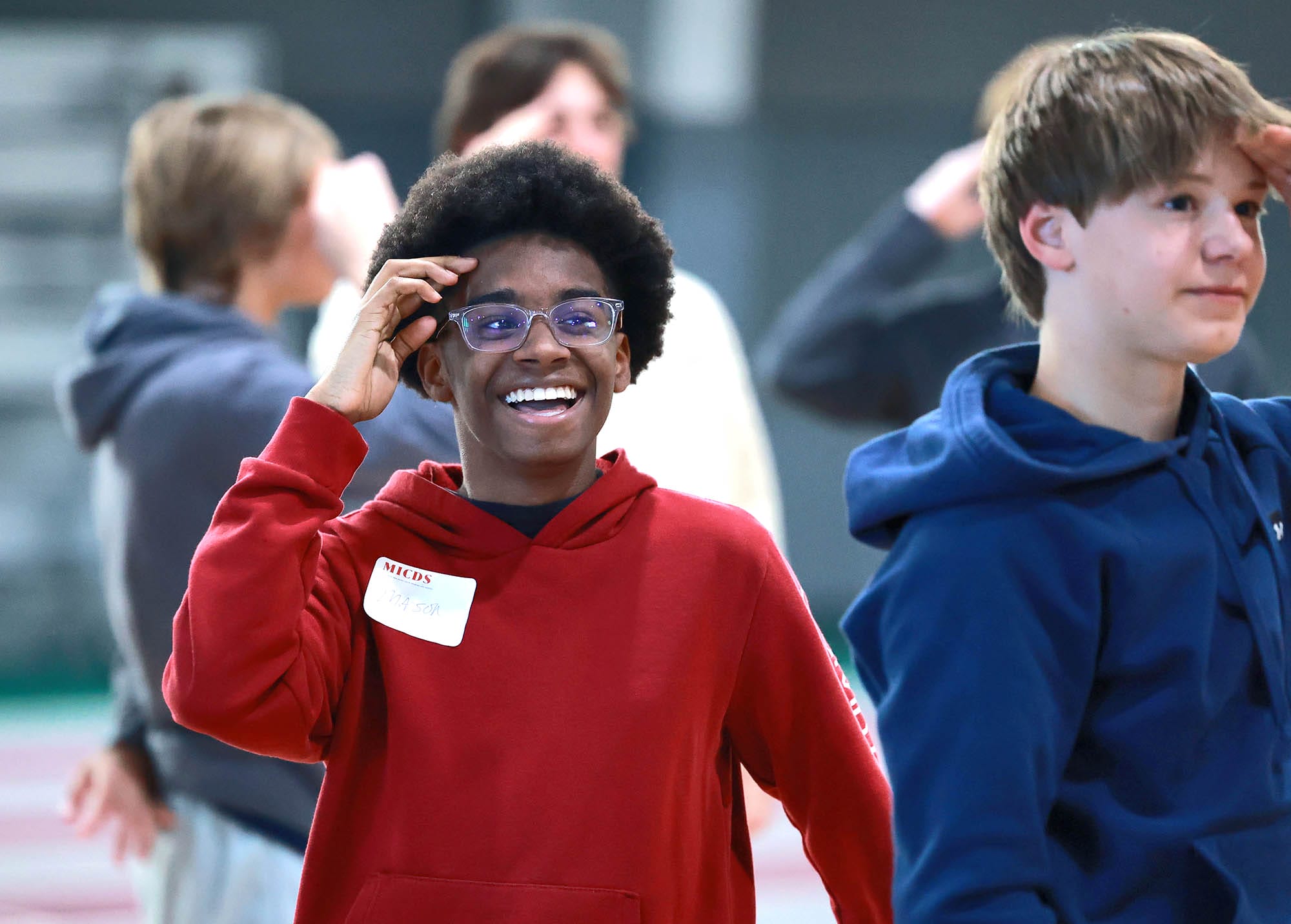The LEAD Summit, formerly known as RISE, allowed seventh and eighth graders to explore what it means to grow together as a community. The day began with students gathering in advisory to enjoy a small breakfast and set their intentions for the day. After that, they were off and running to participate in various activities designed to foment community and reflection, learning and engagement, and bonding with each other and their teachers.
Finding Middle Ground
This session was moderated by our amazing Upper School students, who returned to the Middle School to share their experiences and wisdom with their younger schoolmates. They posed an array of statements for debate, which we invite you to discuss with your own family members!
- A hotdog is a sandwich.
- Water is wet.
- Xbox is better than Playstation.
- Music is not important to express feelings.
- Collaboration overcomes barriers more than conflict ever could.
- Style is important to one’s identity.
After watching the Upper School students moderate the discussion, each group considered how they could use these discussion tactics to resolve when two people are seemingly on two different sides of an issue or experience, how to find middle ground without compromising beliefs, and what is needed to make this a successful strategy as a leader.
Snowball Activity
The Snowball Activity served as an opportunity for students to reflect on their school experience and offer feedback to improve it. It’s a fun way for students to reflect while thinking about how compassion, belonging, and inclusion are or aren’t always the experience at school. Student reflections will be used as valuable feedback, allowing teachers to hear from a a wider student body audience.
Each group began with a discussion about ways students can allow compassion, belonging, and inclusion to guide thoughts and actions during the activity. Then each student received a piece of paper and a pencil. They folded the paper to make ten squares. During the activity, students heard a series of statements related to compassion, belonging, and inclusion, such as:
- My voice matters to my friend group, classmates, teachers, and administrators at MICDS MS.
- My peer group, classmates, teachers, and administrators at MICDS MS value me.
- I belong here and others want me to be here at MICDS MS.
- I can be my best, true self at MICDS MS.
They wrote down the name of each statement and then used the Likert scale to write down the number that best describes their experience, and a quick comment explaining their rating. Finally, they lightly balled up their paper into a “snowball” and tossed it to the other side of the room. Students then grabbed random snowballs, read them, and shared their contents with the group.
Each group discussed their reactions to the activity, how well it aligned to identify each person’s experience at school, whether there were any surprises, and the themes that emerged.
Playback Theater
Middle School Drama Teacher Charlotte Dougherty ran the Playback Theater activity. Students write small scenes based on their lived experiences, and then perform for their peers. Dougherty explained, “Playback is different from traditional theater because it is based on the audience’s stories. It is truly interactive. There is no fourth wall as in most staged plays. There is also no script. Playback has a set of forms, or stylized improvisation techniques, that are used to act out a teller’s (an audience member’s) story. Playback is used to build community; it is an opportunity to share stories about a common happening, a tragic event, or to just get to know one another. It can also be healing and very cathartic.
“The main purpose of Playback is to bring the teller’s story to life for them—so they can relive, rethink, revisit, rebuild, share—it is never about the actors. Playback holds a mirror up to the audience; it is a community service. The audience has an opportunity to experience events through the eyes of others to embrace similarities and differences.”
Microaggressions
“You’re too young for that.” “You’ll understand when you get older.” “That’s for grown-ups.” “You need to man up.” “Boys will be boys.” “You throw like a girl.” “Stop being so bossy!” “You’re just being emotional.”
Has anyone ever said these phrases to you? Or others along the same lines? Maybe it didn’t bother you too much the first time you heard it, but after many times, you got sick of it. That’s because these are examples of microagressions, small acts of cruelty (such as words, jokes, or actions) directed towards a person or a group of people. Microagressions can be unintentional, but still painful. They can hurt because of what they imply about a person or situation.
Students learned about microaggressions and subtext, which is the hidden meaning underneath a word, action, or object. We all use subtext every day. One example is when a students gets into their parent’s car at the end of a long day and answers, “Fine,” to the question, “How was your day?” Depending on how you say the word, it can have many different meanings.
Discussion centered around the subtext of the phrases above, and more, and what happens when we challenge the subtext in those statements. Finally, students learned how to think critically when they suspect they hear or see a microaggression. They should first ask themselves what the subtext is and decide whether it’s a microaggression. They then discussed healthy, effective ways to challenge the microaggression.
Active Time
The planning team for the LEAD Summit wanted to make sure bodies got exercise, in addition to minds. They planned a series of games that got students moving and laughing. The hula hoop race involved students standing in a line and holding hands, passing a hula hoop from person to person without letting go. In the pool noodle race, students laid on the floor head to feet. The first person starts by passing a pool noodle to the next person with their feet, and so on down the line. Ships and sailors rounded out the fun, offering a dynamic version of “Simon Says” with a variety of movements called seasick, shark, man overboard, jellyfish friends, row your boat, and more.
Mix It Up Lunch
Lunch was another new setting. The students got to “mix it up,” eating their meals with new friends. This created a perfect opportunity for students to interact with peers and teachers outside of their immediate social circle and to reflect on the morning sessions. They grabbed lunch in the MS Dining Room and headed to their assigned rooms, where teachers fomented discussion with questions like, “What is something unique you bring to your community,” What are some challenges we might face in fostering understanding and respect, and how can we overcome them,” and “What is something you want to learn more of?”
Conclusion
After the sessions were complete, the students met back up in advisory to debrief about their day. They conducted a “circle session,” sharing answers to questions like “What is one word for you how feel about today,” “What was the most interesting part of the day for you,” “What did you learn about your community – not specific to other kids,” and “What do you think you’ll take forward?”
A closing ceremony in Eliot Chapel rounded out the day, cementing warm feelings and fond memories. Students watched a video from alumnus Bryce Berry ’19, who first instructed them to turn to their left and right and tell their neighbors, “I’m happy to see you here today!” He said that it’s impossible to grow your community without knowing your community, and encourage them to continue doing the hard work of coming together, getting to know each other, to do great things.
“Every MICDS student, when working together, has the power to move mountains.”
-Bryce Berry ’19
Well done, LEAD Summit students and teachers! Way to keep growing our amazing MICDS community!
